U bent hier
Beschikbaarstellen
Library Leaders Forum Kicks off with Policy Discussion: Ways to Better Serve the Public
COVID-19 has made it clear that digital access to books and other library materials is more important than ever. Yet, the information ecosystem is not working as well as it should.
These issues and more were explored during the Policy session of the Library Leaders Forum, a three-week series focused on empowering libraries and the communities they serve through digital lending. In addition to the panel discussion, special announcements were made about the donation and digitization of a rare Frederick Douglass pamphlet, and that Michelle Wu will receive the Internet Archive Hero Award at the final session of the Library Leaders Forum on October 20.
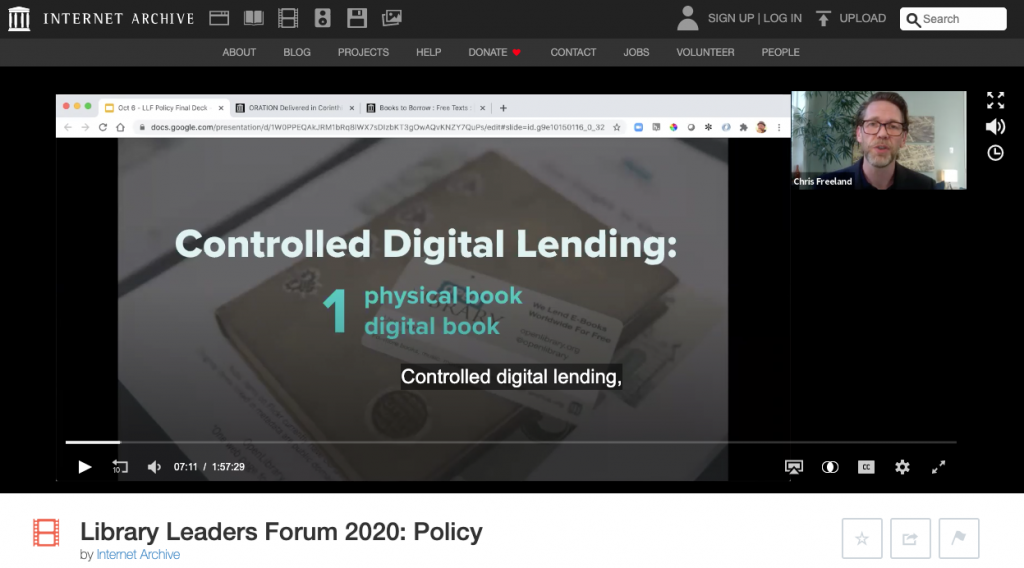
A captioned video of the entire session is now online and available for all to view.
Panel discussionFor the Policy session panel, librarians, authors, publishers, and advocates came together to discuss the role libraries should play in improving the digital landscape for the communities they serve. Potential policy solutions, such as copyright and labor law reforms, as well as collective action and boycotts to pressure publishers were discussed.
“Our country is struggling to find a common set of facts. The truth often lives behind paywalls while misinformation and disinformation go viral,” said Lila Bailey, policy counsel with the Internet Archive, moderating the discussion. “Equal access to information is foundational to our democratic society and it’s part of why libraries exist.”
Digital materials hold the promise for expanded access, but the outcome is not guaranteed. As publishers refuse to sell e-books, but rather license them, libraries are responding with a variety of strategies including Controlled Digital Lending – the digital equivalent of traditional lending.
As libraries evolve with the changing landscape, leaders need tools to change for the better. Brewster Kahle, founder of the Internet Archive, said the balance of power is up for grabs and publishers are pushing for control.
“We need librarians to be trained to push back,” Brewster said. “We are fighters for our patrons. We should stand by libraries and help empower them.”
Carmi Parker, librarian for the Whatcom County Library System in Washington state, said the average price of e-book licensing more than tripled over the past decade and libraries are forced to repurchase more frequently. When McMillan recently limited libraries to buying one e-book in the first eight weeks after publication (instead of dozens of copies of best sellers), Parker’s library consortium launched a boycott. After 1,200 other public libraries joined the protest, the publisher bowed to the pressure and dropped the practice.
“The concern here is this pattern of increasing prices and increasingly limited licenses that impede our ability to offer books to our patrons,” Parker says. “We think that we sent the message that embargoes are not OK, but we still have the crippling prices and limitations. We need to use print lending as a model for how these e-books should work. That’s why I’m interested in Controlled Digital Lending because that’s exactly what it does.”
Kyle K. Courtney, copyright advisor & program advisor at Harvard University, said CDL is a complementary model that helps libraries preserve their mission of long-term preservation and access.
“CDL has emerged as one of several answers to deal with these access issues now,” Courtney says. “CDL helps fill this digital void by harnessing the library’s special role in copyright to broaden digital access. We are craving this kind of digital access.”
Some panelists underscored it was important to embrace new forms of dissemination, but that CDL was an incomplete solution in need of refinement.
Many authors are coming around to the idea that sharing their works openly can only help them gain readers, said Dean Smith, director of Duke University Press.
“We are focused on smart and sustainable Open Access,” says Smith, who adds that OA usage has made his press more relevant. CDL is especially useful for titles that are out of print to bring scholarship that is buried back into circulation, he said. Smith suggested a possible “buy button” be added to books offered on Internet Archive as a way to entice more participation in CDL.
There should be several ways for writers to market and sell their books beyond the large publishers and online outlets, according to Cory Doctorow, a science fiction author, activist and journalist, and special advisor to the Electronic Frontier Foundation. He is a supporter of the Internet Archive and believes libraries should be able to scan books for CDL.
Among Doctorow’s policy wish list to improve digital access: reform the copyright law, change labor laws for writers to form strong unions, subject mergers to strict scrutiny, force breakups of monopolistic firms in publishing, distribution and retail, increase arts funding, and create a Library of Congress rights database.
Meredith Rose, senior policy counsel for Public Knowledge, said that the pandemic might be moving public opinion on some of these issues and lead lawmakers to consider new measures. CDL could be pitched as a solution to help address distance learning, public health, misinformation, disability rights and other relevant concerns.
Looking aheadNext week’s session of the Library Leaders Forum will focus on the community of practice that has developed around Controlled Digital Lending, and the panel discussion will bring together the librarians, technologists and educators who are working together to develop the next generation of library tools that incorporate & build upon Controlled Digital Lending. Registration is free and available now.
The post Library Leaders Forum Kicks off with Policy Discussion: Ways to Better Serve the Public appeared first on Internet Archive Blogs.
On Bookstores, Libraries & Archives in the Digital Age

The following was a guest post by Brewster Kahle in Against The Grain (ATG). See the original article from September 28, 2020 on the ATG website here.
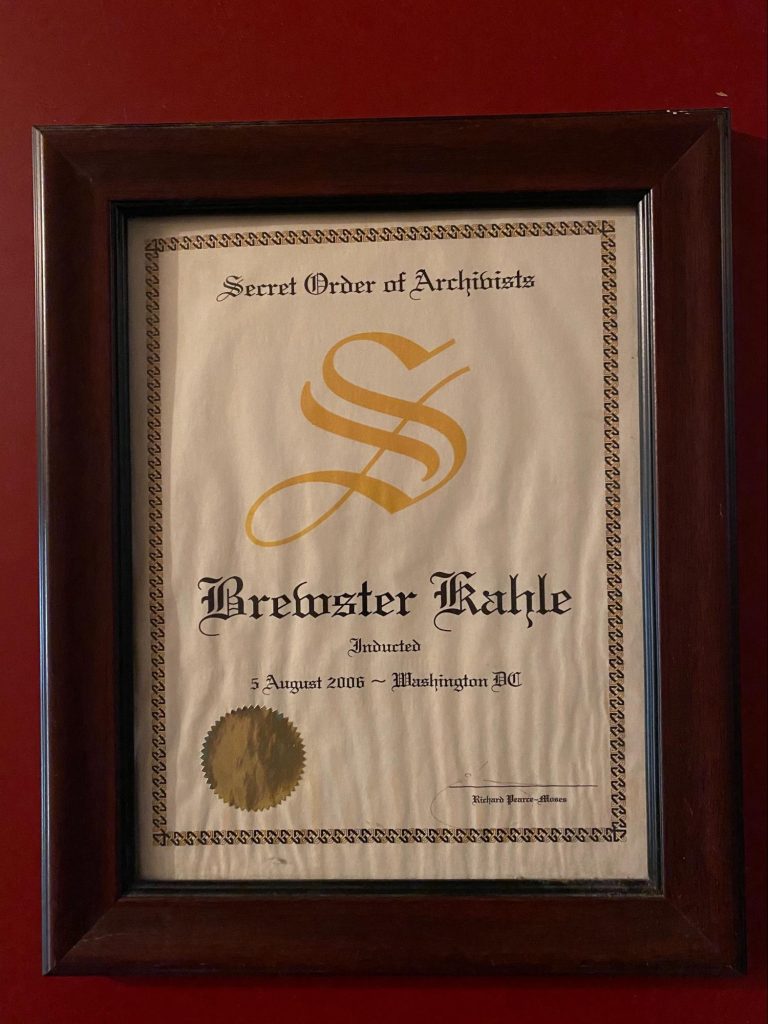
Back in 2006, I was honored to give a keynote at the meeting of the Society of American Archivists, when the president of the Society presented me with a framed blown-up letter “S.” This was an inside joke about the Internet Archive being named in the singular, Archive, rather than the plural Archives. Of course, he was right, as I should have known all along. The Internet Archive had long since grown out of being an “archive of the Internet”—a singular collection, say of web pages—to being “archives on the Internet,” plural. My evolving understanding of these different names might help focus a discussion that has become blurry in our digital times: the difference between the roles of publishers, bookstores, libraries, archives, and museums. These organizations and institutions have evolved with different success criteria, not just because of the shifting physical manifestation of knowledge over time, but because of the different roles each group plays in a functioning society. For the moment, let’s take the concepts of Library and Archive.
The traditional definition of a library is that it is made up of published materials, while an archive is made up of unpublished materials. Archives play an important function that must be maintained—we give frightfully little attention to collections of unpublished works in the digital age. Think of all the drafts of books that have disappeared once we started to write with word processors and kept the files on fragile computer floppies and disks. Think of all the videotapes of lectures that are thrown out or were never recorded in the first place.
Bookstores: The Thrill of the HuntLet’s try another approach to understanding distinctions between bookstores, libraries and archives. When I was in my 20’s living in Boston—before Amazon.com and before the World Wide Web (but during the early Internet)—new and used bookstores were everywhere. I thought of them as catering to the specialized interests of their customers: small, selective, and only offering books that might sell and be taken away, with enough profit margin to keep the store in business. I loved them. I especially liked the used bookstore owners—they could peer into my soul (and into my wallet!) to find the right book for me. The most enjoyable aspect of the bookstore was the hunt—I arrived with a tiny sheet of paper in my wallet with a list of the books I wanted, would bring it out and ask the used bookstore owners if I might go home with a bargain. I rarely had the money to buy new books for myself, but I would give new books as gifts. While I knew it was okay to stay for awhile in the bookstore just reading, I always knew the game.
Libraries: Offering Conversations not AnswersThe libraries that I used in Boston—MIT Libraries, Harvard Libraries, the Boston Public Library—were very different. I knew of the private Boston Athenæum but I was not a member, so I could not enter. Libraries for me seemed infinite, but still tailored to individual interests. They had what was needed for you to explore and if they did not have it, the reference librarian would proudly proclaim: “We can get it for you!” I loved interlibrary loans—not so much in practice, because it was slow, but because they gave you a glimpse of a network of institutions sharing what they treasured with anyone curious enough to want to know more. It was a dream straight out of Borges’ imagination (if you have not read Borges’ short stories, they are not to be missed, and they are short. I recommend you write them on the little slip of paper you keep in your wallet.) I couldn’t afford to own many of the books I wanted, so it turned off that acquisitive impulse in me. But the libraries allowed me to read anything, old and new. I found I consumed library books very differently. I rarely even brought a book from the shelf to a table; I would stand, browse, read, learn and search in the aisles. Dipping in here and there. The card catalog got me to the right section and from there I learned as I explored.
Libraries were there to spark my own ideas. The library did not set out to tell a story as a museum would. It was for me to find stories, to create connections, have my own ideas by putting things together. I would come to the library with a question and end up with ideas. Rarely were these facts or statistics—but rather new points of view. Old books, historical newspapers, even the collection of reference books all illustrated points of view that were important to the times and subject matter. I was able to learn from others who may have been far away or long deceased. Libraries presented me with a conversation, not an answer. Good libraries cause conversations in your head with many writers. These writers, those librarians, challenged me to be different, to be better.
Staying for hours in a library was not an annoyance for the librarians—it was the point. Yes, you could check books out of the library, and I would, but mostly I did my work in the library—a few pages here, a few pages there—a stack of books in a carrel with index cards tucked into them and with lots of handwritten notes (uh, no laptops yet).
But libraries were still specialized. To learn about draft resisters during the Vietnam War, I needed access to a law library. MIT did not have a law collection and this was before Lexis/Nexis and Westlaw. I needed to get to the volumes of case law of the United States. Harvard, up the road, had one of the great law libraries, but as an MIT student, I could not get in. My MIT professor lent me his ID that fortunately did not include a photo, so I could sneak in with that. I spent hours in the basement of Harvard’s Law Library reading about the cases of conscientious objectors and others.
But why was this library of law books not available to everyone? It stung me. It did not seem right.
A few years later I would apply to library school at Simmons College to figure out how to build a digital library system that would be closer to the carved words over the Boston Public Library’s door in Copley Square: “Free to All.”
Archives: A Wonderful Place for Singular ObsessionsWhen I quizzed the archivist at MIT, she explained what she did and how the MIT Archives worked. I loved the idea, but did not spend any time there—it was not organized for the busy undergraduate. The MIT Library was organized for easy access; the MIT Archives included complete collections of papers, notes, ephemera from others, often professors. It struck me that the archives were collections of collections. Each collection faithfully preserved and annotated. I think of them as having advertisements on them, beckoning the researcher who wants to dive into the materials in the archive and the mindset of the collector.
So in this formulation, an archive is a collection, archives are collections of collections. Archivists are presented with collections, usually donations, but sometimes there is some money involved to preserve and catalog another’s life work. Personally, I appreciate almost any evidence of obsession—it can drive toward singular accomplishments. Archives often reveal such singular obsessions. But not all collections are archived, as it is an expensive process.
The cost of archiving collections is changing, especially with digital materials, as is cataloging and searching those collections. But it is still expensive. When the Internet Archive takes on a physical collection, say of records, or old repair manuals, or materials from an art group, we have to weigh the costs and the potential benefits to researchers in the future.
Archives take the long view. One hundred years from now is not an endpoint, it may be the first time a collection really comes back to light.
Digital Libraries: A Memex Dream, a Global BrainSo when I helped start the Internet Archive, we wanted to build a digital library—a “complete enough” collection, and “organized enough” that everything would be there and findable. A Universal Library. A Library of Alexandria for the digital age. Fulfilling the memex dream of Vanevar Bush (do read “As We May Think“), of Ted Nelson‘s Xanadu, of Tim Berners-Lee‘s World Wide Web, of Danny Hillis‘ Thinking Machine, Raj Reddy’s Universal Access to All Knowledge, and Peter Russell’s Global Brain.
Could we be smarter by having people, the library, networks, and computers all work together? That is the dream I signed on to.
I dreamed of starting with a collection—an Archive, an Internet Archive. This grew to be a collection of collections: Archives. Then a critical mass of knowledge complete enough to inform citizens worldwide: a Digital Library. A library accessible by anyone connected to the Internet, “Free to All.”
ABOUT THE AUTHOR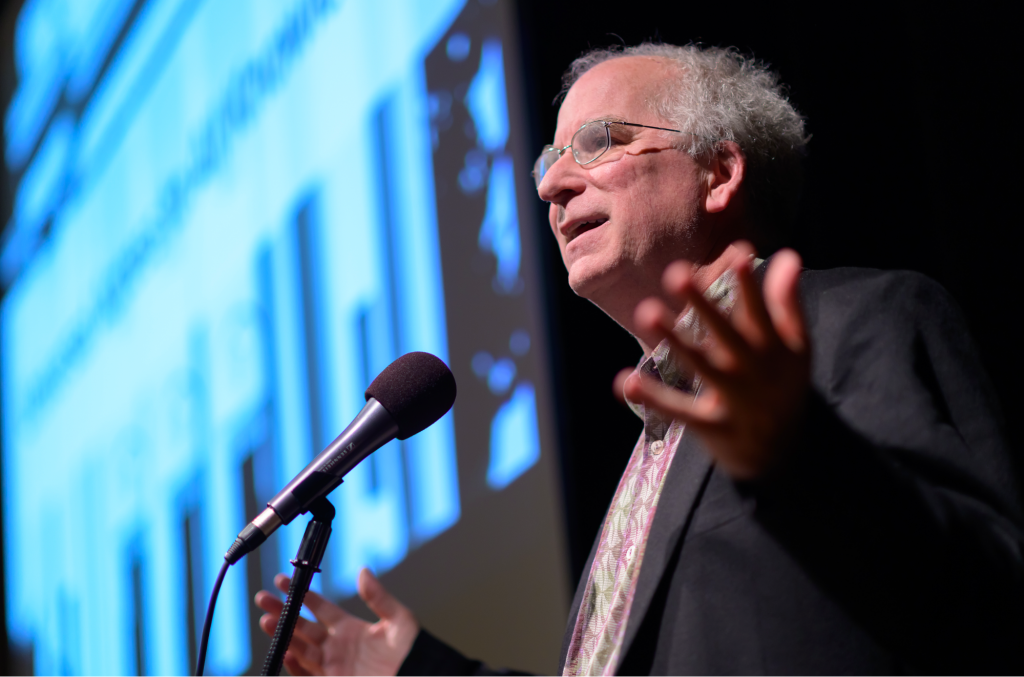
Brewster Kahle, Founder & Digital Librarian, Internet Archive
A passionate advocate for public Internet access and a successful entrepreneur, Brewster Kahle has spent his career intent on a singular focus: providing Universal Access to All Knowledge. He is the founder and Digital Librarian of the Internet Archive, one of the largest digital libraries in the world, which serves more than a million patrons each day. Creator of the Wayback Machine and lending millions of digitized books, the Internet Archive works with more than 800 library and university partners to create a free digital library, accessible to all.
Soon after graduating from the Massachusetts Institute of Technology where he studied artificial intelligence, Kahle helped found the company Thinking Machines, a parallel supercomputer maker. He is an Internet pioneer, creating the Internet’s first publishing system called Wide Area Information Server (WAIS). In 1996, Kahle co-founded Alexa Internet, with technology that helps catalog the Web, selling it to Amazon.com in 1999. Elected to the Internet Hall of Fame, Kahle is also a Fellow of the American Academy of Arts and Sciences, a member of the National Academy of Engineering, and holds honorary library doctorates from Simmons College and University of Alberta.
The post On Bookstores, Libraries & Archives in the Digital Age appeared first on Internet Archive Blogs.
Controlled Digital Lending Visionary Michelle Wu to Receive Internet Archive Hero Award
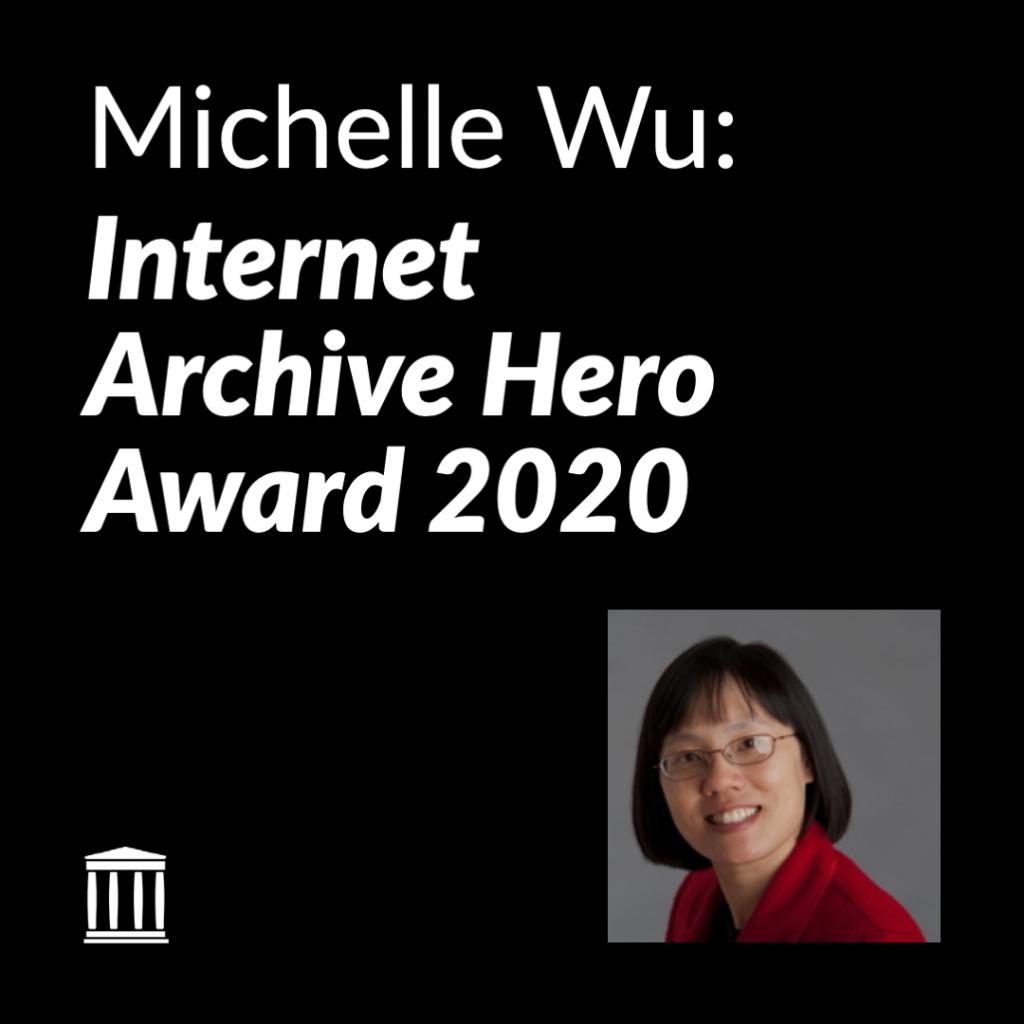
At today’s Library Leaders Forum, Internet Archive founder and digital librarian Brewster Kahle announced that Michelle Wu will receive the 2020 Internet Archive Hero Award. The annual award recognizes those who have exhibited leadership in making information available for digital learners all over the world. Past recipients have included Phillips Academy, the Biodiversity Heritage Library, and the Grateful Dead.
“Michelle Wu was ahead of her time in understanding the transition to the digital era and brought library lending into our new landscape,” said Kahle. “Not only did Michelle see a problem coming, she did something about it.”
Pamela Samuelson, the Richard M. Sherman Distinguished Professor of Law and Information at the University of California, Berkeley, agrees that Wu’s scholarship and contributions to the field have been important. Said Samuelson, “Michelle’s articles explaining the concept have been very useful for students to have not just the reader’s perspective, or law student’s perspective, but how librarians are really taking the challenge of the digital age.”
Wu will receive the award and present an overview of her work during the final Library Leaders Forum session on October 20 at 10am PDT. Registration is free for the virtual event.
MEDIA: photo and biographical sketch available via georgetown.edu.
The post Controlled Digital Lending Visionary Michelle Wu to Receive Internet Archive Hero Award appeared first on Internet Archive Blogs.
Rare Oration by Frederick Douglass Now Available Online
On July 5, 1852, Frederick Douglass gave a speech in Rochester, New York, in which he called out the injustice in the Declaration of Independence for people of color. “This Fourth of July is for yours, but not for mine,” he said. “You may rejoice, I must mourn.”
Douglass’s oration was then printed and distributed, where it has become an important part of anti-slavery and abolitionist collections ever since. One of those copies made its way to Better World Books, which received a first-edition pamphlet with Douglass’s famous remarks, “What to the Slave is the Fourth of July?” from the Library at Hartford Seminary. Instead of selling the artifact, the socially conscious online book seller elected to donate the rare print copy to the Enoch Pratt Free Library in Baltimore to be housed in the special collections of its African American Department.
Prior to gifting the historic item to Pratt, Better World Books partnered with the Internet Archive to digitize and preserve the historic pamphlet for students, readers, scholars, and all people around the world to access. The text is now freely available online to all at https://archive.org/details/orationdelivered00fred/.

The importance of digital access to library materials has been demonstrated during library and school closures due to COVID-19. Said Brewster Kahle, founder and digital librarian at the Internet Archive, “A lot of our libraries are either distant or difficult to get to, so we’re turning more and more to our screens to get the resources we have from our libraries.” Douglass’s oration is an important contribution to that online collection.
“At Better World Books, we believe in the power of knowledge,” said Dustin Holland, president and CEO of the company. “Our library clients entrust us to maximize the value of each and every book we process. Douglass’s famous speech deserves to be accessible and seen by everyone, so we were compelled to serve the greater good by bringing two great library institutions together to serve this purpose.”
Heidi Daniel, president and chief executive officer of Pratt, said the library welcomed the donation of the rebound pamphlet, which would be made available to patrons in person and throughout the region because of Pratt’s designation as a state library resource center. At the entrance of the Pratt library is a quote attributed to Douglass: “Once you learn to read, you are truly free.”
Douglass, an outspoken abolitionist who escaped slavery, was from the Maryland Eastern Shore. “He has a strong legacy in Maryland that is well studied and well researched,” says Daniel. “This [Douglass] Oration will be right at home here in our African American Department.”
The post Rare Oration by Frederick Douglass Now Available Online appeared first on Internet Archive Blogs.
What to Expect at the Library Leaders Forum
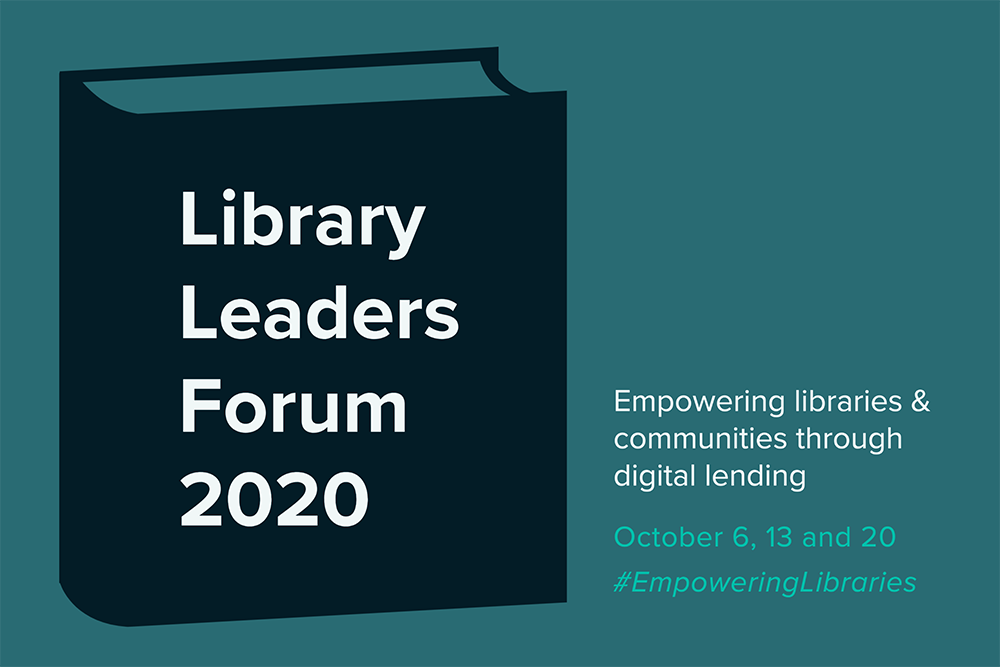
With library service impacted at global scale due to COVID-19, libraries have had to adjust their digital lending programs to meet the needs of the communities they serve. The crisis has proven the power and importance of digital tools in responding to crisis and empowering those who would otherwise be excluded from access to knowledge and education.
So where do we go from here? How can we harness the learnings from this extraordinary time to build the library of the 21st century? This October at the Library Leaders Forum, experts from the library, copyright, and information policy fields will come together for a three-week virtual event exploring the future of digital lending and its key role in a democratic society. Here are our three key discussion points:
Information policy in the digital age: how can we empower libraries?Our first session will focus on policy: how can we build a healthy information ecosystem for the 21st Century? The COVID-19 pandemic has demonstrated that digital access to library materials is more important than ever, and that our current models are not adequate to meet this need. Digital access is particularly important for the most vulnerable people in our society, including disadvantaged communities, people with print disabilities, and those affected by emergency. Information policy, therefore, has wide-ranging implications for equality and the right to education. In this session, librarians, authors, and publishers will come together to discuss what’s broken, what’s working, and the future of information policy and practice.
What is the role of controlled digital lending in the library of the future?Our second session explores the community of practice around controlled digital lending. The power of this key library practice in helping libraries and educators reach marginalized communities and respond to emergencies has been demonstrated during the COVID-19 period. There are now hundreds of libraries using the practice to reach their communities while service is disrupted. The potential of controlled digital lending for contributing to a more equal society where everyone has access to knowledge is clear; how can we expand on the current uses of this powerful tool? In this session, we’ll learn from librarians, educators, and technologists who are developing next-generation library tools that incorporate and build upon controlled digital lending.
How does controlled digital lending impact communities & librarians?Libraries serve communities, and our tools are successful when they have a positive impact on people’s lives. Our final session will therefore focus on first-hand experiences of the impact of controlled digital lending. We’ll hear from libraries that have implemented the practice and from library users about what it has meant for them. We look forward to hearing from those on the frontlines of the COVID-19 response about how they are using digital library practices to adapt to the situation and continue to serve those who most need free access to digital materials.
Beyond the Forum: the #EmpoweringLibraries campaignThe issues raised at the Forum are not merely theoretical, but require urgent action in the face of a new lawsuit which threatens the practice of controlled digital lending and the age-old role of libraries in society. It is crucial for the future of libraries and the rights of our most vulnerable communities that the ideas and experiences shared during the forum are heard more widely. In order to empower the community to stay connected and make their voices heard after the Forum, we will launch the #EmpoweringLibraries campaign, defending the right of libraries to own, preserve and lend digital books. The campaign will turn the ideas discussed during the Forum into action, and the community into a movement for change.
The Library Leaders Forum will take place on 6, 13, and 20 October 2020. You can register for free here, or follow the #EmpoweringLibraries hashtag on Twitter for live updates.
The post What to Expect at the Library Leaders Forum appeared first on Internet Archive Blogs.
Evangelical Seminary Decides Digital Library is Best for Students
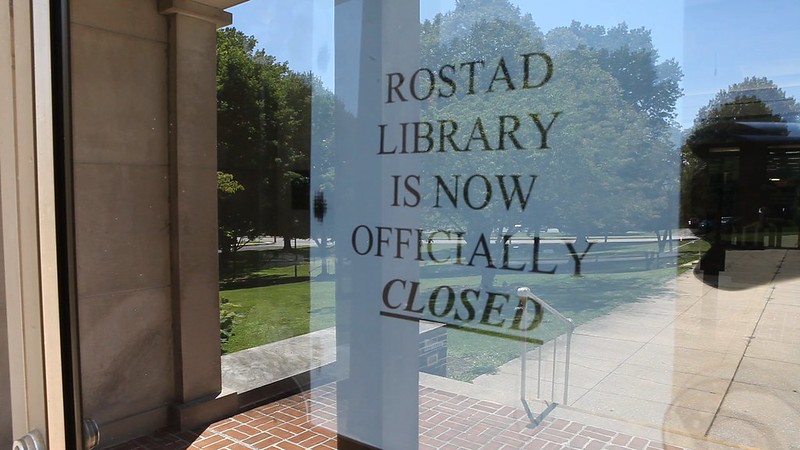 Evangelical Seminary’s Rostad Library donates 80,000 books to the Internet Archive for digitization and preservation (July 14, 2020). Image courtesy Jason Scott, CC BY 2.0.
Evangelical Seminary’s Rostad Library donates 80,000 books to the Internet Archive for digitization and preservation (July 14, 2020). Image courtesy Jason Scott, CC BY 2.0.
As the global pandemic forced schools to remote instruction earlier this year, the pressure was on to make as many resources as possible available in digital form.
Evangelical Seminary moved its classes entirely online in March, closing most of its campus in Myerstown, Pennsylvania—including access to materials in the library. At the same time, the seminary was finalizing a partnership with three other higher education institutions that prompted a review of any resource duplication.
So, in July, Evangelical decided to transform its physical library collection into a digital library and donate more than 80,000 books to the Internet Archive.
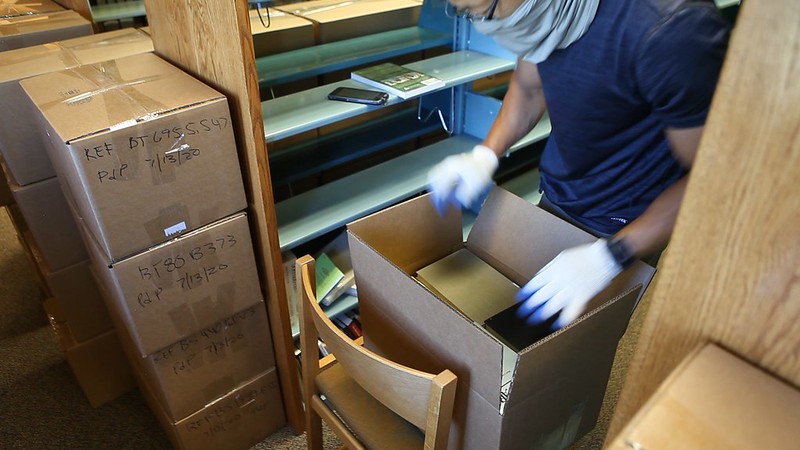 Workers pack books from Evangelical Seminary’s Rostad Library to donate to the Internet Archive for digitization and preservation (July 14, 2020). Image courtesy Jason Scott, CC BY 2.0.
Workers pack books from Evangelical Seminary’s Rostad Library to donate to the Internet Archive for digitization and preservation (July 14, 2020). Image courtesy Jason Scott, CC BY 2.0.
“Faculty members love the feel of a hard copy book and taking a book off the shelf in the library,” says Anthony Blair, president of the seminary. “It was hard and we had to talk that through, but everybody agreed this was a smart thing to do and in the end, it was what’s best for students.”
Once scanned and digitized, students—and the public at large—will have free access to the books at any time from anywhere. Many of the volumes were out of print and fragile. The donation allows the seminary’s vast collection, with its specialities in biblical studies and Wesleyan theology, to be preserved.
“We took advantage of this opportunity. It’s a donation, but we still have access to all these books. They have better access than before—and so do people around the world,” Blair says. “It just made sense.”
At Evangelical, students were increasingly commuting to campus or taking online courses only; some living as far away as Singapore and Korea. The seminary sold its residential housing five years ago because of the shifting demographics.
Evangelical offers eight graduate degree programs including a doctorate of theology, master of divinity and master’s degree in marriage and family therapy. About 150 of its students are seeking a degree (about 90 on the PhD path) and another 50 are taking courses independently.
The seminary had recently begun serving a wider constituency and joined The Digital Theological Library (DTL) to give students easier access to resources. As usage grew with DTL, Blair says talk ramped up about moving to an all-digital library.
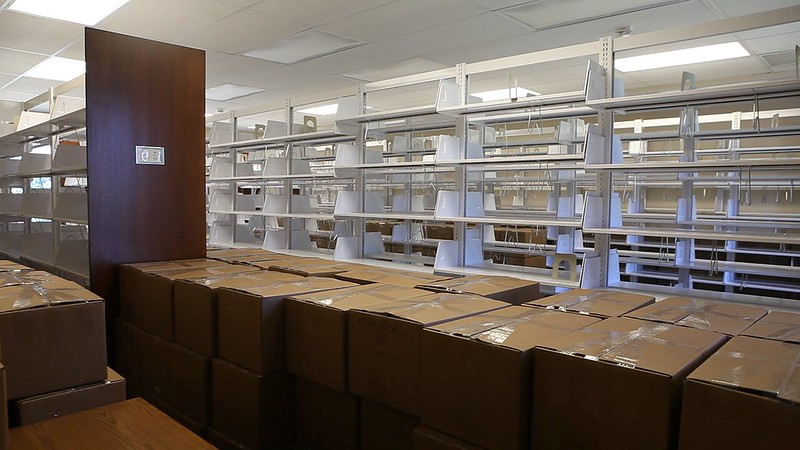 Boxes of books prepped for shipping from Evangelical Seminary’s Rostad Library (July 14, 2020). Image courtesy Jason Scott, CC BY 2.0.
Boxes of books prepped for shipping from Evangelical Seminary’s Rostad Library (July 14, 2020). Image courtesy Jason Scott, CC BY 2.0.
Also, Evangelical recently joined a seminary network, Kairos, headquartered in Sioux Falls, South Dakota, and is in the process of fully merging within the next few years. As the schools come together and combine resources, the timing was right to make the donation. This summer it took less than two weeks for the books to be packed, loaded into trucks and shipped for scanning—all paid for by the Internet Archive.
The seminary has shared news of its move to an all-digital library with alumni, donors and students, all of whom have been overwhelmingly positive, says Blair. As students wait for the collection to be moved online over the next two years, the seminary is partnering with two physical libraries for interlibrary loan services.Blair says he was pleased to have Evangelical’s collection join the Claremont School of Theology’s donation from earlier this year: “Between our donation and their donation, the theology collection at the Internet Archive will be enhanced quite a bit and our students will benefit.”
The post Evangelical Seminary Decides Digital Library is Best for Students appeared first on Internet Archive Blogs.
DWeb Panel: If Big Tech Is Toxic, How Do We Build Something Better?

Many of us know that the Internet is broken, so how do we build something better? On September 22, DWeb San Francisco invited a panel of experts to share their views on the most viable paths forward. The panelists included author & EFF advisor Cory Doctorow, Matrix.org co-founder Amandine Le Pape, decentralized social media researcher Jay Graber, and TechDirt’s Mike Masnick. They covered a range of approaches — including technical, regulatory, and organizational — that could bring us towards a future where our networks are more resilient, participatory, and decentralized.
ABOUT THE PANELISTS:
Best-selling science fiction author and EFF Special Advisor, Cory Doctorow, emphasized that we need to fix the Internet, not the tech companies by doing a lot more to bring back principles of interoperability, to enable more competition and innovation.
Developer, and founder of Happening, Jay Graber, shared her insights on what she found hopeful about the decentralized web ecosystem, and some of the challenges that some of these protocols still need to grapple with moving forward.
Chief Operating Officer of Element and Co-founder of the Matrix.org Foundation, Amandine Le Pape, shared what she learned as Matrix built a new open standard for real-time communication from the ground up, as well as her ideas on how to counter the information silos of the big centralized platforms.
Journalist and co-founder of Techdirt, Mike Masnick, shared about the way people were realizing the need for change, and also some of his skepticism about how some proposed regulations to enforce interoperability may harm start-ups and other less-resourced projects. Masnick’s 2019 white paper, “Protocols, Not Platforms: A Technological Approach to Free Speech” has been an influential call to arms for the decentralized tech community.
As Mike Masnick writes:
At a time when so many proposals for how to deal with the big internet companies seem focused on spite and anger at those companies, rather than thoughtful discussions of how we get to what’s coming next, at the very least I’m hopeful that others can be inspired…to come up with their own ideas for a better, more proactive approach to a future internet.
Ultimately, that vision—building a better Internet and Web—is the North Star that the DWeb community aims for.
The post DWeb Panel: If Big Tech Is Toxic, How Do We Build Something Better? appeared first on Internet Archive Blogs.
Peace, Love, and Quantum Physics

In the middle of a tumultuous period, peace is more important than ever. This year, the Internet Archive celebrated the International Day of Peace with a screening of the film Infinite Potential: The Life & Ideas of David Bohm—an exploration of a maverick physicist who turned to Eastern wisdom for insights into the profound interconnectedness of the universe and our place within it. Hosted by the Fetzer Memorial Trust and Imagine Films on September 20th, the event also included a special panel discussion on how Bohm’s ideas can be translated into a pathway to peace in the modern world.

Infinite Potential examines the life of David Bohm, a theoretical physicist from Pennsylvania who was forced to flee the United States during the Cold War due to his Communist leanings. Pursuing his research in Brazil, Israel, and the United Kingdom, he was exposed to a wide variety of different ideas and ideologies, which all shaped his interests in quantum physics, philosophy, and the nature of consciousness. His relationships with thinkers such as Jiddu Krishnamurti and Albert Einstein further shaped his ideas, leading him to develop unique theories about the fundamental nature of reality and our perception of it.
The screening of the documentary was followed by a panel entitled Quantum Potential: A Pathway to Peace, featuring several prominent leaders and activists. These included Dot Maver, Founding President of the National Peace Academy; Reverend Dr. Michael B. Beckwith, Founder and Spiritual Director of the Agape International Spiritual Center; Audrey Kitagawa, Board Chair of the Parliament of World Religions; Civil rights leader Reverend Dr. Bernard LaFayette, Jr.; Bob Roth, CEO of the David Lynch Foundation; and Marianne Williamson, a bestselling author, political activist and spiritual thought leader. Panel members discussed how Bohm’s ideas could be applied to our society, ways in which individuals could advance peace and unity, and why the interconnectedness of humanity matters now more than ever.
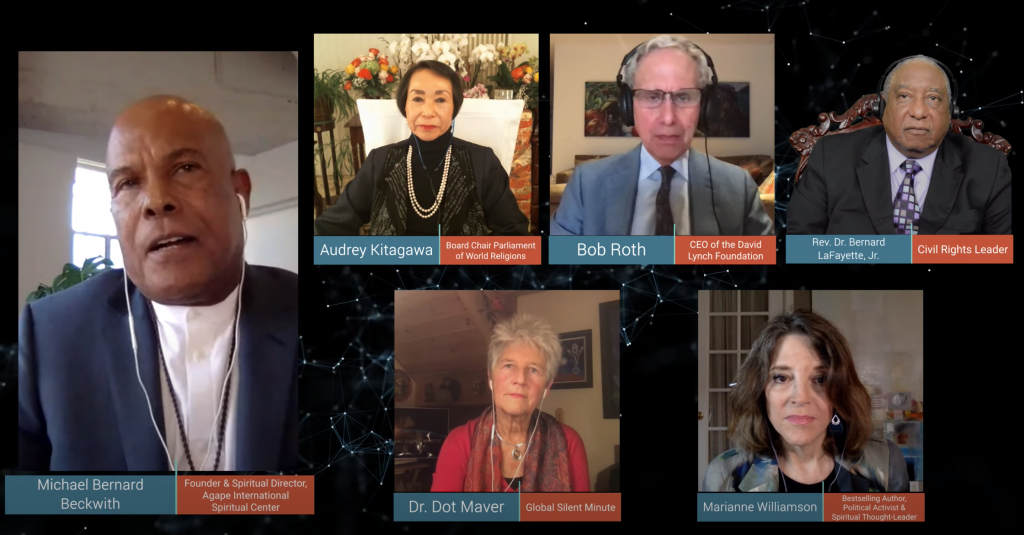
For those who were unable to attend the event, the documentary and the following panel discussion are both available online. Additionally, the Internet Archive is home to a number of materials on David Bohm, including several of his writings. Finally, to learn more about our partners and the hosts of this event, browse the the Fezter Memorial Trust collections here.
The post Peace, Love, and Quantum Physics appeared first on Internet Archive Blogs.
PM Press Sells Ebooks to Internet Archive: “We want our books to be in every library”
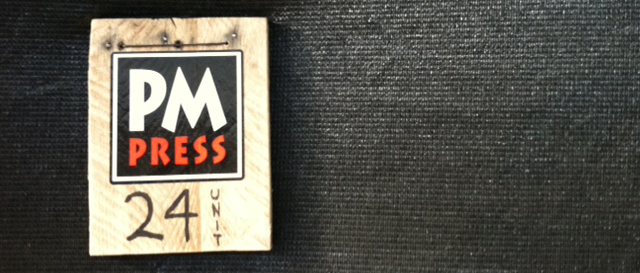
Like any commercial publisher, Ramsey Kanaan wants to make money and have as many people as possible read his books. But he says his company, PM Press, can do both by selling his books to the public and to libraries for lending – either in print or digitally.
While most publishers only license ebooks to libraries, PM Press has donated and sold both print and ebook versions of its titles to the Internet Archive to use in its Controlled Digital Lending (CDL) program. By owning the copies, the Internet Archive ensures that the press’s collection of publications is available to the public and preserved.
“We’re not above profit making. It’s with sales that we pay our salaries. Nevertheless, the reason we are also doing this is we actually believe in the information we are selling and we want to make it accessible,” says Kanaan. “We want our books to be in every library.”
Founded in 2007, PM Press has published between 30 and 40 titles a year. The books (all available in print and various digital formats) include fiction, graphic novels, comics, memoirs, and manifestos on topics such as activism, education, self-defense and parenting. “We’d like to assert or inject our ideas contained in the titles we publish as our modest contribution to making the world a better place,” says Kanaan.
“Our interest is in the dissemination, preservation and archiving of ideas…with no firewall.”
Ramsey Kanaan, co-founder and publisher, PM PressFrom the beginning, Kanaan says the agenda of PM Press has been deeper than just making money by renting books annually to libraries. “The concept of charging multiple times to us is ridiculous and contrary to everything we are trying to do in publishing,” he says. “Our interest is in the dissemination, preservation and archiving of ideas…with no firewall.”
Kanaan says he doesn’t understand the objections to CDL by publishers that have sold their print books to libraries for decades. “If a library purchases a book or an ebook it’s going to be ‘borrowed’ by, ideally, lots of people. The industry has entered into this agreement with libraries for time immemorial – presumably access without further commercial transaction,” says Kanaan. “I don’t see the difference in a library making a print or ebook available for borrowing once it’s purchased. It’s the same.”
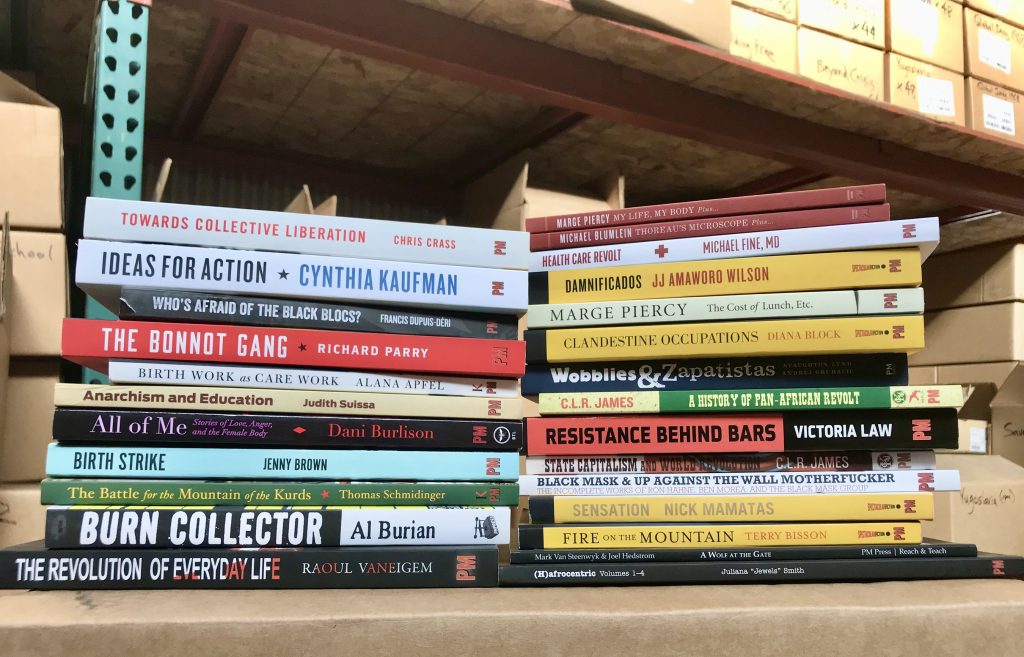 A selection of books from PM Press.
A selection of books from PM Press.
In donating to the Internet Archive in December 2019 and selling the other print titles and ebooks in the PM Press collection, Kanaan hopes this hybrid approach will help expand the audience for its titles. “The Internet Archive is not bootlegging materials. They are like any other library lending out one copy at a time.”
Kanaan maintains that companies against CDL as a way of doing business are “dinosaurs” and that digital lending is the future. “We see the Internet Archive as a partner in our endeavor to get our information out,” Kanaan says. “We want to achieve a better world for most of its inhabitants. We’re fighting against the 1 percent who only want a better world only for themselves. I’m hoping we are not just on the right side of history, but that we are actually going to win this one.”
The Internet Archive has been buying ebooks from publishers for more than 10 years, but the number has been limited because most publishers insist on license arrangements that constrain our ability to preserve and lend. If you would like to sell ebooks to the Internet Archive and other libraries, please contact us at info@archive.org.
The post PM Press Sells Ebooks to Internet Archive: “We want our books to be in every library” appeared first on Internet Archive Blogs.
Author Shares Mentoring Expertise Through Controlled Digital Lending
Rik Nemanick believes in the power of mentoring in the workplace. As an author, corporate consultant, and university instructor, he explains to business leaders and students how a mentor can bring the best out in others.
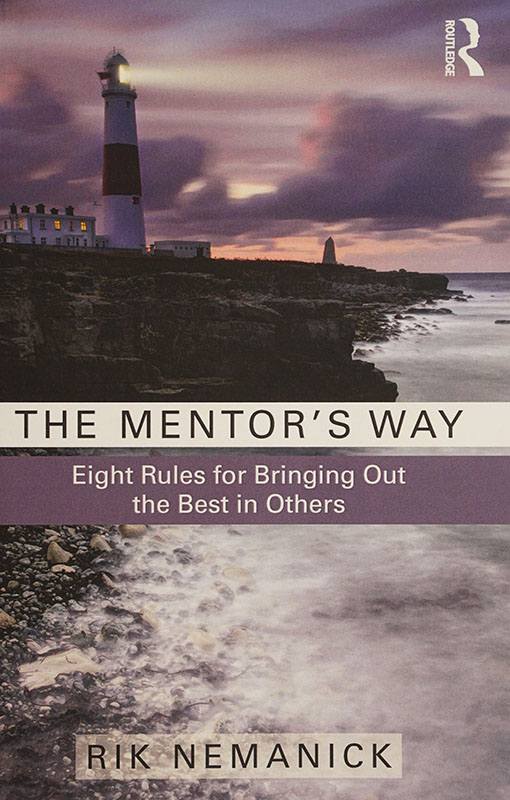 The Mentor’s Way: Eight Rules for Bringing Out the Best in Others by Rik Nemanick, now available for borrowing through Controlled Digital Lending.
The Mentor’s Way: Eight Rules for Bringing Out the Best in Others by Rik Nemanick, now available for borrowing through Controlled Digital Lending.
“A mentor is different from a teacher who imparts knowledge,” Nemanick says. “A good mentor broadens someone’s perspective and opens doors. It’s about challenging someone’s thinking and creating a relationship.”
Over the years, the St. Louis businessman was urged to put his leadership development research and expertise into a book. Published in 2016 by Routledge, The Mentor’s Way: Eight Rules for Bringing Out the Best in Others, is now available for lending through the Internet Archive.
“I want my message out there. I saw the Internet Archive as a way to make it more available to more people,” Nemanick says of his recent donation to the Controlled Digital Lending program. “The book sitting on Amazon or a shelf doesn’t get anyone engaged as much as if it’s available at the library.”
One of the first things that Nemanick says he did when the book was published was to donate a copy to Washington University Library in St. Louis. He wanted it available for students in his executive education graduate courses in leadership, mentoring, and human resource metrics so they could learn the concepts he advocates.
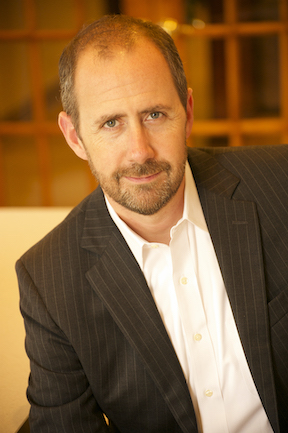 Author and mentoring consultant Rik Nemanick
Author and mentoring consultant Rik Nemanick
Through his work, Nemanick says he wants to challenge the way people think about mentoring and offer practical ideas. Often people enter their careers with certain, narrow expectations and a mentor can be critical with the workplace adjustment. “A mentor can help someone find their way in their profession,” he says. “My hope is that people can find their fit more easily with the information in my book.”
Nemanick says he does not worry about his book being hurt by library lending through Controlled Digital Lending.
“This is a respectful way to get your message heard. A fair number of authors just want people to read what they have written,” he says. “It’s just one more avenue to make sure it gets into people’s hands.”
The post Author Shares Mentoring Expertise Through Controlled Digital Lending appeared first on Internet Archive Blogs.
Cloudflare and the Wayback Machine, joining forces for a more reliable Web
 Cloudflare now populating and using the Internet Archive’s Wayback Machine in its content distribution network application
Cloudflare now populating and using the Internet Archive’s Wayback Machine in its content distribution network application
Cloudflare and the Internet Archive are now working together to help make the web more reliable. Websites that enable Cloudflare’s Always Online service will now have their content automatically archived, and if by chance the original host is not available to Cloudflare, then the Internet Archive will step in to make sure the pages get through to users.
Cloudflare has become core infrastructure for the Web, and we are glad we can be helpful in making a more reliable web for everyone.
“The Internet Archive’s Wayback Machine has an impressive infrastructure that can archive the web at scale,” said Matthew Prince, co-founder and CEO of Cloudflare. “By working together, we can take another step toward making the Internet more resilient by stopping server issues for our customers and in turn from interrupting businesses and users online.”
For more than 20 years the Internet Archive’s Wayback Machine has been archiving much of the public Web, and making those archives available to journalists, researchers, activists, academics and the general public, in total to hundreds of thousands of people a day. To date more than 468 billion Web pages are available via the Wayback Machine and we are adding more than 1 billion new archived URLs/day.
We archive URLs that are identified via a variety of different methods, such as “crawling” from lists of millions of sites, as submitted by users via the Wayback Machine’s “Save Page Now” feature, added to Wikipedia articles, referenced in Tweets, and based on a number of other “signals” and sources, such multiple feeds of “news” stories.
An additional source of URLs we will preserve now originates from customers of Cloudflare’s Always Online service. As new URLs are added to sites that use that service they are submitted for archiving to the Wayback Machine. In some cases this will be the first time a URL will be seen by our system and result in a “First Archive” event.
In all cases those archived URLs will be available to anyone who uses the Wayback Machine.
By joining forces on this project we can do a better job of backing up more of the public Web, and in so doing help make the Web more useful and reliable.
If you have suggestions about how we can continue to improve our services, please don’t hesitate to drop us a note at info@archive.org.
The post Cloudflare and the Wayback Machine, joining forces for a more reliable Web appeared first on Internet Archive Blogs.
How the Internet Archive is Ensuring Permanent Access to Open Access Journal Articles
Internet Archive has archived and identified 9 million open access journal articles– the next 5 million is getting harder
Open Access journals, such as New Theology Review (ISSN: 0896-4297) and Open Journal of Hematology (ISSN: 2075-907X), made their research articles available for free online for years. With a quick click or a simple query, students anywhere in the world could access their articles, and diligent Wikipedia editors could verify facts against original articles on vitamin deficiency and blood donation.
But some journals, such as these titles, are no longer available from the publisher’s websites, and are only available through the Internet Archive’s Wayback Machine. Since 2017, the Internet Archive joined others in concentrating on archiving all scholarly literature and making it permanently accessible.
The World Wide Web has made it easier than ever for scholars to collaborate, debate, and share their research. Unfortunately, the structure of today’s web means that content can disappear just as easily: as of today the official publisher websites and DOI redirects for both of the above journals go nowhere or have been replaced with unrelated content.
Wayback Machine captures of Open Access journals now “vanished” from publisher websites
Vigilant librarians saw this problem coming decades ago, when the print-to-digital migration was getting started. They insisted that commercial publishers work with contract digital preservation organizations (such as Portico, LOCKSS, and CLOCKSS) to ensure long-term access to expensive journal subscription content. Efforts have been made to preserve open articles as well, such as Public Knowledge Project’s Private LOCKSS Network for OJS journals and national hosting platforms like the SciELO network. But a portion of all scholarly articles continues to fall through the cracks.
Researchers found that 176 open access journals have already vanished from their publishers’ website over the past two decades, according to a recent preprint article by Mikael Laakso, Lisa Matthias, and Najko Jahn. These periodicals were from all regions of the world and represented all major disciplines — sciences, humanities and social sciences. There are over 14,000 open access journals indexed by the Directory of Open Access Journals and the paper suggests another 900 of those are inactive and at risk of disappearing. The pre-print has struck a nerve, receiving news coverage in Nature and Science.
In 2017, with funding support from the Andrew Mellon Foundation and the Kahle/Austin Foundation, the Internet Archive launched a project focused on preserving all publicly accessible research documents, with a particular focus on open access materials. Our first job was to quantify the scale of the problem.
Of the 14.8 million known open access articles published since 1996, the Internet Archive has archived, identified, and made available through the Wayback Machine 9.1 million of them (“bright” green in the chart above). In the jargon of Open Access, we are counting only “gold” and “hybrid” articles which we expect to be available directly from the publisher, as opposed to preprints, such as in arxiv.org or institutional repositories. Another 3.2 million are believed to be preserved by one or more contracted preservation organizations, based on records kept by Keepers Registry (“dark” olive in the chart). These copies are not intended to be accessible to anybody unless the publisher becomes inaccessible, in which case they are “triggered” and become accessible.
This leaves at least 2.4 million Open Access articles at risk of vanishing from the web (“None”, red in the chart). While many of these are still on publisher’s websites, these have proven difficult to archive.
One of our goals is to archive as many of the articles on the open web as we can, and to keep up with the growing stream of new articles published every day. Another is to look back over the vast petabytes of web content in the Wayback Machine, back to 1996, and find any content we might already have but is not easily findable or discoverable. Both of these projects are amenable to software automation, but made more difficult by the evolving nature of HTML and PDFs and their diverse character sets and encodings. To that end, we have approached this project not just as a technical one, but also as a collaborative one that aims to add another piece to the distributed infrastructure supporting open scholarship.
To expand our reach, we built an editable catalog (https://fatcat.wiki) with an open API to allow anybody to contribute. As the software is free and open source, as is the data, we invite others to reuse and link to the content we have archived. We have also indexed and made searchable much of the literature to help manage our work and help others find if we have archived particular articles. We want to make scholarly material permanently available, and available in new ways– including via large datasets for analysis and “meta research.”
We also want to acknowledge the many partnerships and collaborations that have supported this work, many of which are key parts of the open scholarly infrastructure, including ISSN, DOAJ, LOCKSS, Unpaywall, Semantic Scholar, CiteSeerX, Crossref, Datacite, and many others. We also want to acknowledge the many Internet Archive staff and volunteers that have contributed to this work, including Bryan Newbold, Martin Czygan, Paul Baclace, Jefferson Bailey, Kenji Nagahashi, David Rosenthal, Victoria Reich, Ellen Spertus, and others.
If you would like to participate in this project, please contact the Internet Archive at webservices@archive.org.
The post How the Internet Archive is Ensuring Permanent Access to Open Access Journal Articles appeared first on Internet Archive Blogs.
RSVP Now for “Quantum Potential: A Pathway to Peace”

“Infinite Potential” Virtual Screening & Discussion
On September 20th, please join the Internet Archive in celebrating the International Day of Peace with a screening of the film INFINITE POTENTIAL: The Life & Ideas of David Bohm. The event, put on by the Fetzer Memorial Trust and Imagine Films, will feature a special post-screening panel discussion – Quantum Potential: A Pathway to Peace.
Infinite Potential explores the revolutionary theories of David Bohm, the maverick physicist who turned to Eastern wisdom to develop groundbreaking insights into the profound interconnectedness of the Universe and our place within it. This mystical and scientific journey into the nature of life and reality will include a post-screening panel discussion with commentary from:
Reverend Dr. Michael B. Beckwith, Founder & Spiritual Director, Agape International Spiritual Center
Audrey Kitagawa, Board Chair, Parliament of World Religions
Reverend Dr. Bernard LaFayette, Jr., Civil Rights Leader
Bob Roth, CEO of the David Lynch Foundation
Marianne Williamson, bestselling author, political activist and spiritual thought leader
Dot Maver (moderator), Founding President of the National Peace Academy
Date And Time
Sunday, September 20, 2020
Film — 3:00 pm PDT / 6:00 pm EDT
Panel discussion — 4:15 pm PDT / 7:15 pm EDT
Location
Online Event
 Watch the trailer from Infinite Potential: The Life & Ideas of David Bohm
Watch the trailer from Infinite Potential: The Life & Ideas of David Bohm
The post RSVP Now for “Quantum Potential: A Pathway to Peace” appeared first on Internet Archive Blogs.
Registration Is Now Open for the Library Leaders Forum

Every October we host the Library Leaders Forum, which is traditionally a one-day workshop that brings together librarians, archivists, and information managers to learn about emerging technologies in libraries. Registration is now open for this year’s Forum, which will be entirely virtual. We hope you can join in and learn from a distance about new developments and projects at the Internet Archive, especially those relating to controlled digital lending.
The theme of this year’s Forum is “Empowering Libraries and Communities Through Digital Lending.” With library service impacted at global scale due to COVID-19, libraries have had to adjust their digital lending programs to meet the needs of the communities they serve. Join experts from the library, copyright, and information policy fields for a three-week virtual event exploring current digital lending strategies for libraries and the future of digital lending. Sessions will be held online October 6, 13, & 20.
October 6: Policy
10am-12pm PDT
Join leaders in the library copyright community & policy experts for a panel discussion on the future of digital lending and its value to libraries and the communities they serve.
October 13: Community
10am-12pm PDT
A community of practice has emerged around controlled digital lending. Learn from leaders who are developing next generation library tools that incorporate and build upon CDL.
October 20: Impact
10am-12pm PDT
Learn from libraries that have implemented controlled digital lending and hear from users about the impact the library practice has made for them.
Register now for each session, and also check out our pre-conference workshop “How Controlled Digital Lending Works for Libraries.”
Last year’s Forum was a rousing success! Read the recap.
The post Registration Is Now Open for the Library Leaders Forum appeared first on Internet Archive Blogs.
All models reflect a point of view
We sometimes talk about having a “bird’s eye” perspective of a place or about a topic. We can see how details connect to form a larger whole. The distance highlights the patterns that may be hard to see up close. In many ways, a content model is a bird’s eye view of content addressing topics or activities. It’s a map of our content landscape.
This year, many of us — having been shut indoors involuntarily and had our travel limited — have marveled at the freedom of travel that birds enjoy. Bird watching has become a popular pastime during the pandemic, encouraging people to consult content about birds to understand what they are newly noticing.
Content about birds provides an excellent view into the structure of content — even for people not interested in birds. Nearly 20 years ago JoAnne Hackos discussed what field guides to birds can teach us about structuring content in her book, Content Management for Dynamic Web Delivery. Information about birds offers a rich topic to explore content structure.
Last year, I conducted a workshop exploring content structuring decisions by comparing how field guides describe bird species. I have a collection of field guides about Indian birds from my time living in India. They all broadly cover the same material, but the precise coverage of each varies. Some will talk about habitats, others will discuss diet. They will get into different levels of detail.
 Various guides to Indian birds
Various guides to Indian birds
As someone interested in birds, I noticed how these field guides differed when discussing the same bird species. Even the images of a bird varied greatly: whether they are paintings or photos, if they are in context or not, and whether distinguishing features are described in the text or as annotations. Image choices have profound implications for what information is conveyed.
All this variation reveals something that’s obvious when you see it: there’s no one way to describe a bird. People make editorial choices when they structure content. That’s a very different way of thinking about content structure than the notion of domain modeling, which assumes that things we describe have intrinsic characteristics that can be modeled objectively. Domain modeling presumes there’s a platonic ideal that we can discover to describe things in our world. It can provide some conceptual scaffolding for identifying the relationships between concrete facts associated with a topic. Domain modeling is best approached from the viewpoint of different personas. Why do they care about any of these facts? And importantly, might they care about different facts?
Without doubt, it’s valuable to get outside of our subjective ways of seeing to consider other viewpoints. But that doesn’t imply there’s a single viewpoint that is definitive or optimal. Content modeling is not the same thing as data modeling, just as content isn’t simply data. The limitation of domain modeling is that it doesn’t provide any means to distinguish more important facts from less important ones. And it treats content as data, where facts are readily reduced to a few concrete objective statements rather than involving descriptive interpretations or analysis. With a domain model, it’s not obvious why people care about any of the data. Before we can build experiences from content, we need the basic content to be interesting and relevant. Relevance and interest have been overlooked in many discussions about content modeling.
While I see richness in small editorial decisions among different field guides, a person not interested in birding may find these distinctions as unimportant. To a casual viewer, all field guides look similar. There’s a generic template that field guides seem to follow to describe birds. Here, the editorial decisions have emerged over time as a common framework that’s widely accepted and expected. Some people will view the task of structuring content as one of finding an existing framework that’s known, and copying it. Instead of searching for the intrinsic properties of things that can be described, the search is finding patterns already used in the content. Adopting vernacular structural patterns has much to commend it. These patterns are familiar, and in many cases work fine. But relying on habit can also cause us to miss opportunities to enrich how to describe things. They may satisfy a basic need, but they don’t necessarily do so optimally.
The most disruptive development to influence field guides is the smartphone app. These apps shake up how they approach birds and can incorporate image and audio recognition to aid in identifying a species. They can be marvelously clever in what they can do, but they too represent editorial decisions: a focus on a transactional task rather than a deeper look into context and comparison. The more that content exists to support a repetitive transactional task, the more tightly prescribed the content will be in a model. If you consider content as existing only to support narrow transactional needs, the structure of the model might seem obvious, because what else would someone care about? Such a model presumes zero motivation on the part of the reader: they only want to view content that is necessary for completing a task.
Field guides exist to aid the identification of birds. Deciding what information is important — or is readily available — to aid the identification of birds still involves an editorial judgment.
Topics don’t have intrinsic structures. The structure depends in part on the tasks associated with the topic. And the more that a topic requires the motivation of the reader — their interest, preferences, and choices outside of a narrow task supported within the UI — the more important the editorial dimensions of the content model become. The model needs to express elements that tell readers why they would care about the topic: what they should learn or see as important and relevant.
Importantly, the discussion of a topic is not limited to a specific genre. Species of birds can be discussed in ways other than field guides. Within a genre, you can change the structure associated with it. But you can switch genres as well, and embrace a different structure entirely.
When we consider structures within genres, we may be inclined to confuse its form with its intent. The importance of genre is that it provides a point of view to elucidate a topic.
Picture books provide an alternative genre to present content about birds. They involve the tight juxtaposition of words and images, often to provide a richer narrative about a topic. Beyond that, the structure involved is not standardized or well defined. The genre is most often associated with children’s books and exemplified by outstanding writer-illustrators such as Maurice Sendak, Dr. Seuss, and Quintin Blake.
But picture books are not limited to children’s entertainment. They can potentially be used for any sort of topic and any audience.
This spring a new picture book, What it’s like to be a Bird, was released that became an instant bestseller. It was produced by David Sibley, a renowned ornithologist and illustrator. “My original idea, in the early 2000s, was to produce a bird guide for kids. Then I started thinking about it as a bird guide for beginners of any age. But having created a comprehensive North American bird guide, the concept of a ‘simplified’ guide never clicked for me. Instead, I wanted to make a broader introduction to birds.”
His goal is to “give readers some sense of what it’s like to be a bird…My growing sense as I worked on this book is that instinct must motivate a bird by feelings — of satisfaction, anxiety, pride, etc…how else do we explain the complex decision that birds make everyday…” Sibley wants to capture the bird’s experience making decisions on its life journey. A wonderful backdrop as we think about the reader’s experience on the journey through his book.
“Each essay focuses on one particular detail…they are meant to be read individually, not necessarily in sequence — everything is interconnected, and there are frequent cross-references suggesting which essay to read next.” We can see how Sibley has planned a content model for his material.
Bolstered by his talents as a subject expert, writer, and illustrator, he’s been able to rethink how to present content about birds. While he’s also written a conventional field guide to birds, his new book explores species through their behavior. His is not the only recent book looking at bird behavior, but the perspective he offers is unique. Rather than organizing content around behavior themes such as mating, he focuses the content on species of birds and then talks about two or three key behaviors they have that are interesting. The birds act as protagonists in stories about their life situation.
Sibley’s book profiles various species of birds — something field guides do as well. But Sibley’s profiles explain the bird from its own point of view, instead of from an external viewpoint of concrete properties such as feather markings or song calls. The stories of these species incapsulate actions that happen over a period involving a motivation and outcome. They aren’t data.
He introduces species of birds by presenting two or three stories about each. Each story is a short essay explaining an illustration of an activity the bird is engaged in. Frequently, the illustration is puzzling, prompting the reader to want to understand it. In some cases, he breaks the story into several small paragraphs, each with its own illustration, when he wants to describe a sequence of events over time.
A simplified content model will show how Sibley explains birds. The diagram reveals a highly connected structure. It doesn’t look like the hierarchical structure of a book. There’s no table of contents or index. Though the content is manifested as a book, it could be delivered to alternative platforms and channels.
 A simplified content model for Sibley’s What it’s like to be a bird
A simplified content model for Sibley’s What it’s like to be a bird
On the far left of the diagram, we see themes about birdlife that are explored. These themes may be broken into sub-themes. For example, the theme of survival has two sub-themes, which has even more specific sub-themes:
- Survival
- Birds and weather
- Keeping cool
- Keeping warm
- Avoiding predators
- Be inconspicuous
- Be alert
- Create a distraction
- Birds and weather
Each theme or sub-theme presents a range of related factual statements. For example, he presents a series of facts about how birds create distractions. These facts represent some important highlights about a theme: an index of knowledge that offers a range of perspectives. Each fact points to a profile of a bird specifies, where a story essay will provide context about the statement and make it more understandable.
In this example, we see how the theme of how birds use smell is revealed through a series of facts that point to essays about how different species use of smell.
 Thematically grouped factual highlights about birdlife (source: David Sibley’s What it’s like to be a Bird)
Thematically grouped factual highlights about birdlife (source: David Sibley’s What it’s like to be a Bird)
When we visit a profile of a bird species, we encounter several stories, which are a combination of picture and essay. The illustration shows a starling holding a cigarette in its beak. The situation has the makings of a story — we want to know more. The essay tells us.
 Illustration and essay providing a story relating to a behavior of a bird species (source: David Sibley’s What it’s like to be a Bird)
Illustration and essay providing a story relating to a behavior of a bird species (source: David Sibley’s What it’s like to be a Bird)
Even if the story is enjoyable, a part of us may wonder if it’s just an entertaining yarn. Picture books are most often associated with fantasy, after all. And unlike a nature program on TV, we don’t see a museum expert in a talking head interview to make it seem more credible. Instead, we get a list of recent scientific references relating to the issue. All these references are arranged thematically, like our facts. They provide an overview of the focus on recent scientific research about birds, giving us a sense of how much scientists are still learning about these ubiquitous creatures that are as old as dinosaurs.
 Source references of recent discoveries from scientific research relating to birds, arranged thematically (source: David Sibley’s What it’s like to be a Bird)
Source references of recent discoveries from scientific research relating to birds, arranged thematically (source: David Sibley’s What it’s like to be a Bird)
The structuring of the content helps us to understand and explore. The stories make each bird more real: something living we can become interested in. We can understand their dilemmas and how they seek to solve them. We are up-close. But we can also step back and understand the broader behaviors of birds that influence their lives.
While each species is described through stories, we are not limited to those. How do other birds work with smell? What have we learned recently about smell and birds? These other pathways allow us to follow our interests and find different connections.
Sibley’s model shows how to transcend the top-down hierarchies that force how to learn about a topic and the bottom-up collections of random facts that leave us with no structure to guide us. Sibley’s model of content can be approached in different ways, but it is always deliberate. There’s no feeling of being lost in hyperlinks.
Content models should reflect what readers want to get and how they might want to get it. They are more than a technical specification. They are an essential tool in editorial planning. Developing a content model can be a creative act.
— Michael Andrews
The post All models reflect a point of view appeared first on Story Needle.
Hope International University’s Journals Get New Digital Life
In January, Robin Hartman learned major renovations planned at Hope International University in Fullerton, California, meant the library would have to give up 25 percent of its space. That forced Hartman, director of library services at the 2,000-student private university, to make some tough decisions.
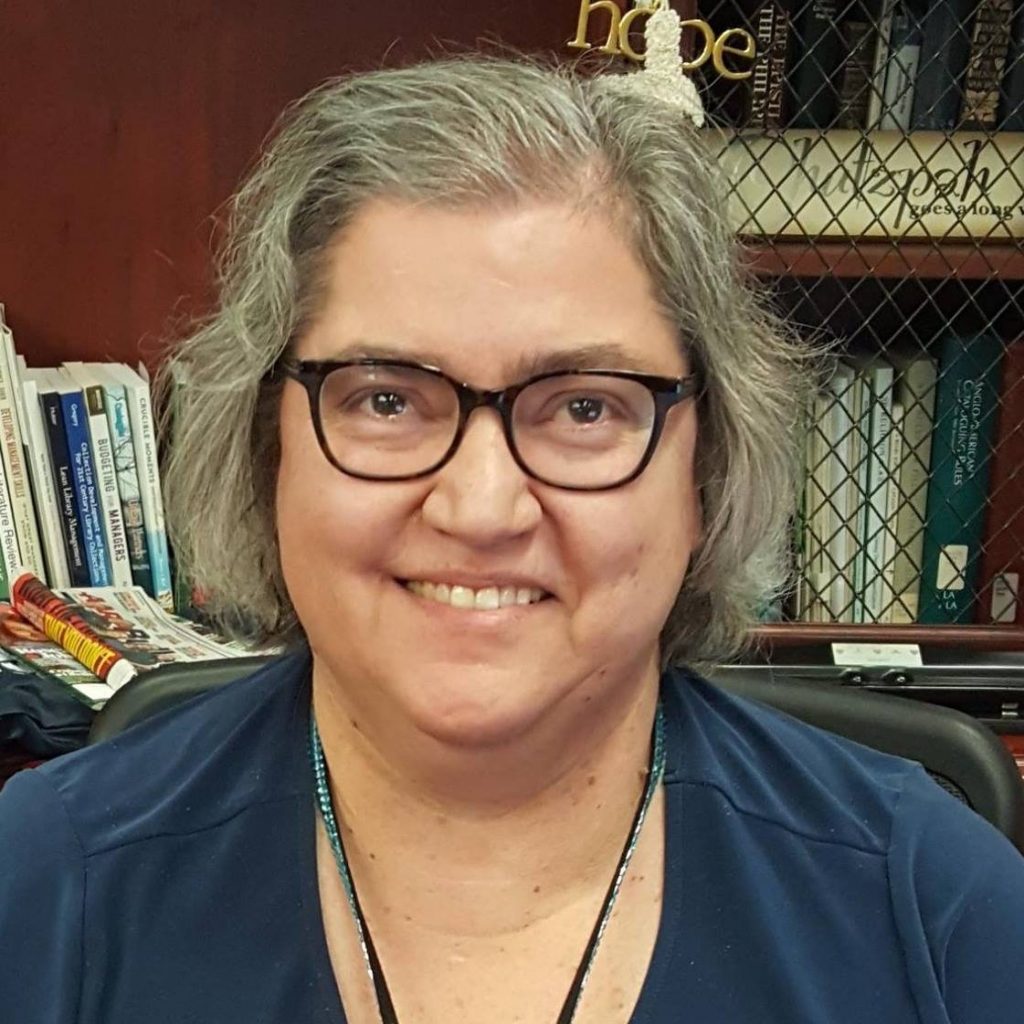 Robin Hartman, Director of Library Services at Hope International University
Robin Hartman, Director of Library Services at Hope International University
What would she do with the back issues of periodicals now that there would be only six shelving sections to store the journals and magazines instead of 40? Hartman ended up keeping periodicals that were only available in print and less than 10 years old. That left her with volumes of older issues that she didn’t want to just throw in a dumpster.
Hartman contacted Internet Archive to give Hope’s vast collection of older periodicals a new digital life. Working from her home during the COVID-19 crisis this summer, she instructed the construction crew and student workers to box up the excess journals—191 boxes in all. Internet Archive arranged to provide pallets and plastic wrap to safely pack the periodicals. The boxes were loaded onto a semi-truck and transported to San Francisco for preservation at no expense to the university.
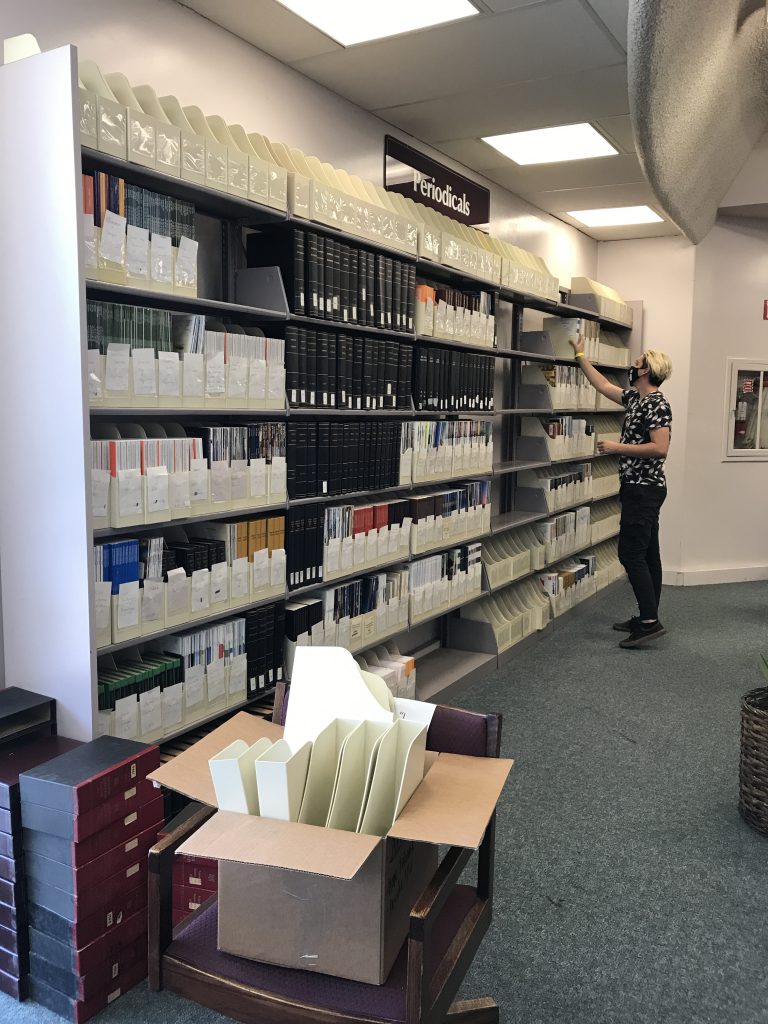
“When I found out Internet Archive was able to take the older periodicals that we couldn’t keep, I was really thrilled,” Hartman says. “I was able to tell my faculty they are not gone forever. They will be digitized eventually and made available online.”
The donation includes a range of popular magazines and academic journals linked to the Christian university’s majors such as: Clinical Psychology, Educational Leadership, Family and Society, Journal of American History, Journal of Ecclesiastical History, Journal of Spirituality and Mental Health, Journal of Sports Management, and Pastoral Psychology.
“I feel much better that they are going to a good home. They are good, valid sources,” Hartman says.
Hartman is telling librarian colleagues about the donation in hopes of interesting others in adding to Internet Archive’s collection. Many libraries are being reconfigured to make room for tutoring or snack bars and are facing financial cuts in the wake of the pandemic. There is also a shift in preference for digital among students over print journals, notes Hartman, making libraries rethink their collections.
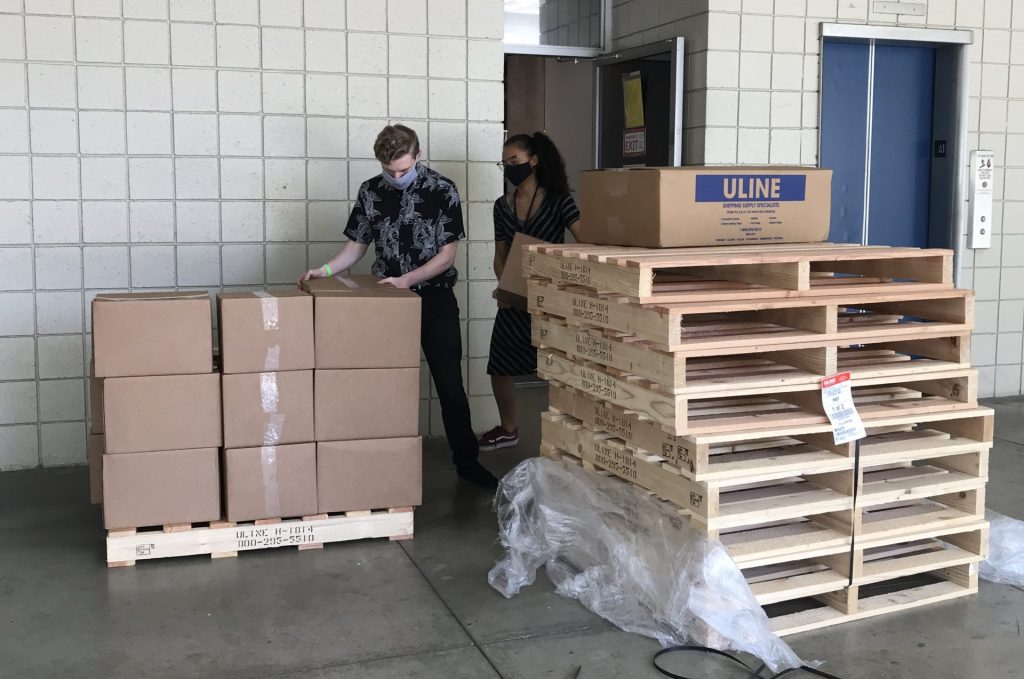 Loading boxes of donated journals at Hope International University to be preserved and digitized by Internet Archive.
Loading boxes of donated journals at Hope International University to be preserved and digitized by Internet Archive.
“The periodicals will be more useful online,” says Hartman, who plans to continue donating materials to the Archive. “Resource sharing is important for libraries these days. Internet Archive was a great solution for us. I think Internet Archive is a way of sharing resources for the good of all the library communities.”
If your library is interested in donating print journals to Internet Archive for preservation and digitization, please learn more on the Donations page.
The post Hope International University’s Journals Get New Digital Life appeared first on Internet Archive Blogs.
Judge Sets Tentative Trial Date for November 2021

This week, a federal judge issued this scheduling order, laying out the road map that may lead to a jury trial in the copyright lawsuit brought by four of the world’s largest publishers against the Internet Archive. Judge John G. Koeltl has ordered all parties to be ready for trial by November 12, 2021. He set a deadline of December 1, 2020, to notify the court if the parties are willing to enter settlement talks with a magistrate judge.
Attorneys for the Internet Archive have met with representatives for the publishers, but were unable to reach an agreement. “We had hoped to settle this needless lawsuit,” said Brewster Kahle, Internet Archive’s founder and Digital Librarian. “Right now the publishers are diverting attention and resources from where they should be focused: on helping students during this pandemic.”
The scheduling order lays out this timeline:
- Discovery must be completed by September 20, 2021;
- Dispositive motions must be submitted by October 8, 2021;
- Pretrial orders/motions must be submitted by October 29, 2021;
- Parties must be ready for trial on 48 hours notice by November 12, 2021.
In June, Hachette Book Group, Inc., HarperCollins Publishers LLC, John Wiley & Sons, Inc., and Penguin Random House LLC—with coordination by the Association of American Publishers—filed a lawsuit to stop the Internet Archive from digitizing and lending books to the public, demanding that the non-profit library destroy 1.5 million digital books.
Publishers Weekly Senior Writer Andrew Albanese has been covering the story from the beginning. In a July 31st Beyond the Book podcast for the Copyright Clearance Center, Albanese shared his candid opinions about the lawsuit. “If this was to be a blow out, open-and-shut case for the publishers, what do the publishers and authors get?” Albanese asked. “I’d say nothing.”
“Honestly, a win in court on this issue will not mean more sales for books for publishers. Nor will it protect any authors or publisher from the vagaries of the Internet,” the Publishers Weekly journalist continued. “Here we are in the streaming age, 13 years after the ebook market took off, and we’re having a copyright battle, a court battle over crappy PDFs of mostly out-of-print books? I just don’t think it’s a good look for the industry.”
In order to make the vast majority of 20th Century books accessible to digital learners, libraries such as the Internet Archive have been digitizing the physical books they own and lending them on a 1-to-1 “own to loan” basis—a legal framework called Controlled Digital Lending. Publishers refuse to sell ebooks to libraries, insisting on temporary licenses on restrictive terms. This business practice “threatens the purpose, values, and mission of libraries and archives in the United States,” explains Kyle K. Courtney, copyright advisor to Harvard University Libraries. “It undermines the ability of the public (taxpayers!) to access the materials purchased with their money for their use in public libraries and state institutions, and further, it is short sighted, and not in the best interest of library patrons or the public at large.”
“Libraries have always had the right to buy and lend books. It’s at the core of a library’s mission,” said Kahle. “The Internet Archive would like to purchase ebooks, but the publishers won’t sell them to us, or to any library. Instead they are suing us to stop all learners from accessing the millions of digitized books in our library.”
The post Judge Sets Tentative Trial Date for November 2021 appeared first on Internet Archive Blogs.
The Legend of GayBlade
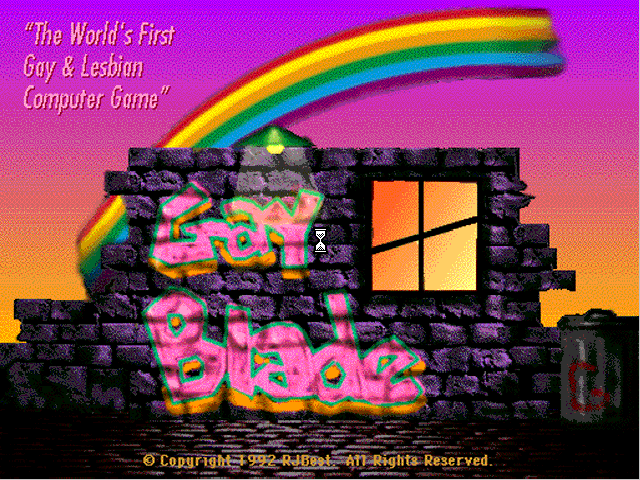
The recently released video game documentary High Score includes a sequence in the third episode about a game called GayBlade. GayBlade is one of the first commercially-sold LGTBQ-themed video games, a role-playing romp for Windows and Macintosh occasionally referred to as “Dungeons and Drag Queens”. Once thought to have been lost, the game’s software was recently discovered and preserved—and is now available in the Internet Archive!
Although LGTBQ people have been creating video games since the earliest days of the industry, there were very few games before the 21st century that explicitly had LGTBQ themes. Game creator Ryan Best hoped to change that with GayBlade, remarking, “This game gives lesbians and gays—and straight people—a chance to strike back at homophobia from behind our computer screen.”

The game is definitely political, racy and unafraid to make waves, as it definitely did in 1992 when it was released. Players are tasked with exploring a deep dungeon filled with homophobic enemies, trying to rescue the Empress Nelda and return her to Castle GayKeep. Best (and co-creator John Theurer) filled the game with humorous spells, items and antagonists while still keeping it all within the traditional role-playing genre. There are over 13 levels and 1,300 different rooms in this dungeon, reflecting the remarkable amount of work put into it by its creators—truly a unique work of art.
After being lost in a move from Honolulu to San Francisco, the game was thought to have disappeared forever. In High Score, creator Ryan Best laments that he was unable to find any of the game files, and was not very hopeful he would ever find them. But that’s not the end of the story—between the close of filming and the release of the documentary, Best discovered another copy of his game. Thanks to efforts by the LGTBQ Game Archive, Strong Museum of Play, and Internet Archive, it was preserved.
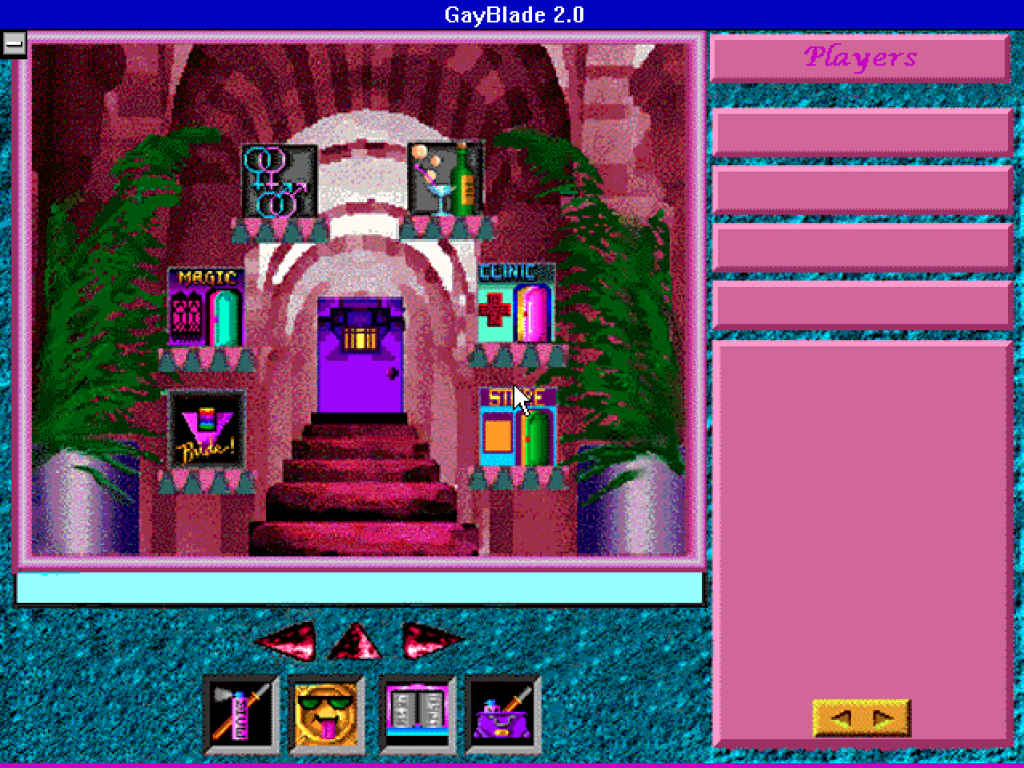
If you want to experience GayBlade for yourself, it’s available in our emulated games collection. You can play it directly in your browser if you’d like, or download the original source code. Additionally, an even earlier LGTBQ game called Caper In The Castro, a mystery adventure dating to 1989, is also emulated in the archive. So hit play and take a look at a little-known slice of LGTBQ history!
The post The Legend of GayBlade appeared first on Internet Archive Blogs.
Harvard Copyright Scholar: “Libraries have special authority”
On July 22, 2020, Kyle K. Courtney, Copyright Advisor at Harvard University, spoke at a press conference about the copyright lawsuit against the Internet Archive brought by the publishers Hachette, HarperCollins, Wiley, and Penguin Random House. He holds a J.D. with distinction in Intellectual Property Law and a Master of Science in Library and Information Science (MSLIS) degree. Courtney is a published author and nationally recognized speaker on the topics of copyright, technology, libraries, and the law. These are his remarks:
Part of my work in scholarship is about the roles of copyright and the library landscape. I wrote the white paper on Controlled Digital Lending of library books with my coauthor David Hansen at Duke University Libraries. And it presents the legal rationale supporting the overview document called the Position Statement on Controlled Digital Lending, which has been endorsed by many national library organizations, regional library consortia, specific library systems, themselves, individual librarians, and legal experts. Ultimately, though, this is about how libraries can do what they’ve always done, right? Lend books. The paper looks at the underpinnings of the library’s historical mission through the lens of both fair use and first sale, true critical rights that I think any library uses in their programs, right? Both for lending and preservation. And I discuss how libraries can legally lend digital copies of their print collections using this technology.
But I’d like to point out that a CDL system is not a brand new concept, like Corynne stated: libraries loan books to the public. It’s what they do, for centuries. And libraries do not need permission or a license to loan those books that they have purchased or acquired. Copyright law covers those exact issues. But the difference here, I think, and some of the conflict is that the vendors and publishers have to ask permission, right? They must license. This is their business model. Historically, libraries are special creatures of copyright law; libraries have a legally authorized mandate, by the way, granted by Congress, to complete their mission to provide both access to materials. Congress actually placed all of these specialized copyright exemptions for libraries in the Copyright Act itself. So that’s kind of fun to look at library’s unique role in copyright law, they sit right in the middle, both housing the economic purpose of copyright: “we buy the books, we buy lots of books,” and the access purpose of copyright, which is, “we loan the books out to our users.”
Or if you want to put that in the constitutional narrative: libraries are promoting the progress of science and the useful arts. Libraries have historically provided unfettered access and freedom to the books that they purchase for their communities. Now, because of that, there’s multiple versions of CDL-like systems that are currently used in libraries. But I think the origin of the real legal underpinning concept was first explored by Professor Michelle Wu at Georgetown University School of Law in an article that she wrote that I read many times, “Building a Collaborative Digital Collection.” Later, the Internet Archive formed up the Open Library Program, which Chris talked about, which was nine years ago. And other institutions are exploring this option right in their own individual libraries or part of consortia or within affinity groups.
It’s exciting to see, but at its core, Controlled Digital Lending is about replicating, through the Controlled Digital Lending Process, the legal and economically significant aspects of physical lending. And in other words, let’s put this simply: it continues to preserve the powers in the print. A library has these significant legal usage rights and they have great fiscal value in their collections. Some public library systems have spent millions upon millions of dollars to make their collections accessible to the community. And I believe the CDL structure preserves that value by enhancing access of these works to the public through technology. And as Chris pointed out, it’s the same technology that’s used by publishers to distribute in the commercial marketplace.
Again, this may be about the fear of technology, certainly, but technology should be used to enhance access to materials and do what libraries have always done: increasing access to knowledge by loaning the materials to the public. Just because we’re using technology does not mean that suddenly these acts are new. And in fact, libraries have special authority to provide both access longterm to information and preserve these materials for much longer than the business model of any particular corporation, company, or vendor.
And this is especially true with the 20th Century works that are in libraries, right? They have not been available in the digital world across the board. They call this “The 20th Century Black Hole.” Many 20th Century books are not available for purchase as new copies or in print or digital versions online. And I don’t know if your students are like mine or anyone else or patrons: if it’s not digital, it’s almost like it doesn’t exist. Libraries would like to provide digital access, but we can’t, because these are not available in a licensed format or in a digital format that’s available to loan, but we have them on our shelves.
So as many of our student patrons say, “We want access to these works,” and these could be long lost print works, by the way, that are really not lost; they’re on the shelves of our libraries, just trapped there, and in COVID maybe trapped there for a longer time than anticipated. So imagine the potentially enormous high social and scholarly value and relatively low risk if we make these works available to the public for reading, quoting, citing, adaption, using Wikipedia articles. So that’s kind of the exciting aspect of it. I’m not going to get into great detail, but our principle argument in this paper, which summarizes all these points, is that Controlled Digital Lending is a fair use, which is an equitable rule of reason, that permits libraries to do what they’ve always done. And under the First Sale Doctrine, loan those books to users. Thanks a lot for your time.
The post Harvard Copyright Scholar: “Libraries have special authority” appeared first on Internet Archive Blogs.
An Archive of a Different Type
It was supposed to be magazines.
Elaine Wooton contacted me as many people do – in the middle of a shutdown and discard project, asking if the Internet Archive might want some of what is destined for deep storage or the trash compactor. In this case, she said, there might be some old journals and magazines I’d want. They were centered around the culture and innovations of the modern office, “modern” being the 1970s and 1980s. My general policy is to say yes, and if possible, make my way down to get the materials themselves. This set was in New York City, and as I live outside the metropolis, I said I’d be glad to pop down from my home and pick up these 5-10 banker’s boxes worth, to make it easier.
Elaine brought out the boxes on a cart, and said that if at all possible, I might consider coming upstairs to the office she was cleaning out to see if anything else might be of interest.
I parked my car and came up.
This is what I saw.
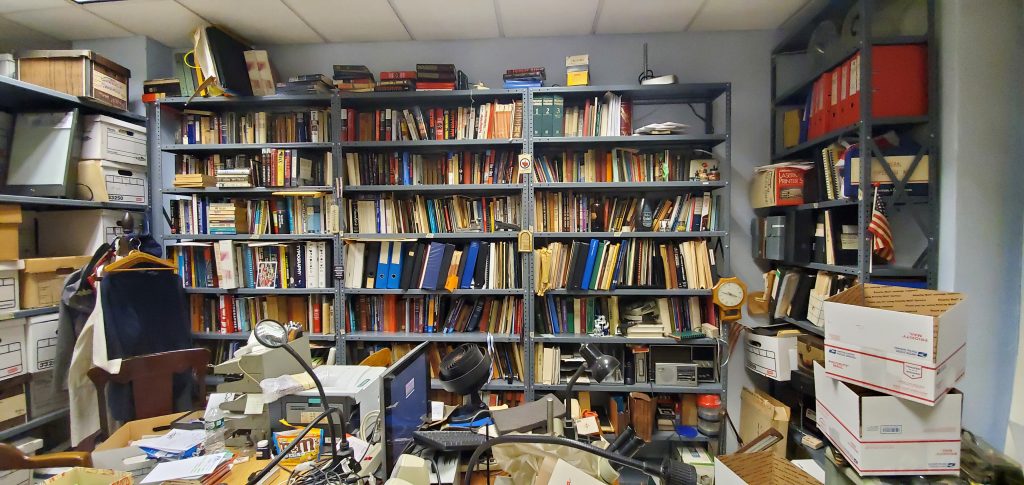
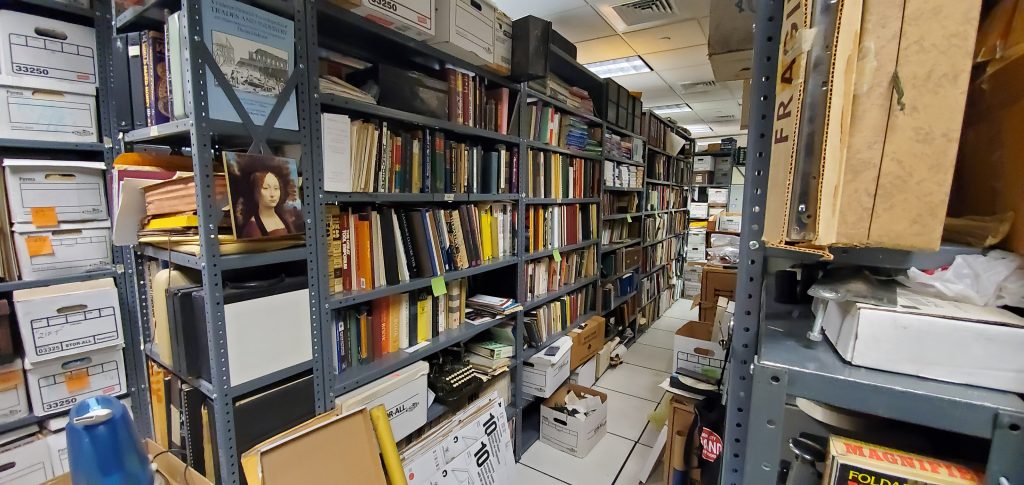

I asked a few questions about the nature and story of this office, and based on those answers, I said something that I honestly don’t get a chance to say that often:
“We will take all of it.”
A month later, nearly the entire contents of this office and storage were here:


As our team of folks began remixing the collection of boxes from the quick job done by movers into something more manageable for the Archive, Elaine and I were standing at the final chapter of a family history that spanned many decades and represented both a disappearing world and a fascinating story.
“Psychoanalysis for your typewriter“
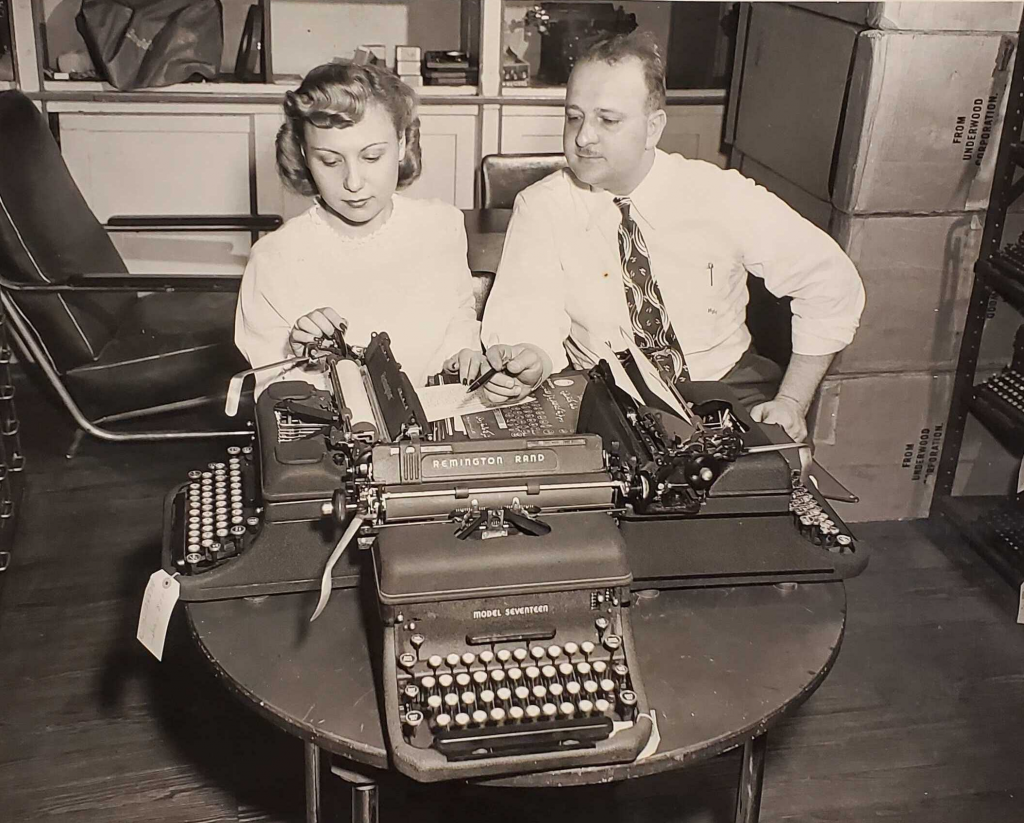
Imagine being so well-known for your craft that letters addressed to “Mr. Typewriter, New York” would get delivered by the Post Office to your door. Imagine you mount a letter wrong while crafting a typewriter, and it causes a country (Burma) to change that letter to accommodate your mistake. Or that, through decades, your expert testimony about the accuracy of a brand of typewriter and the characters it types means the difference between guilt, incarceration, freedom or the swapping of fortunes. Such was the life of Pearl and Martin Tytell, of Tytell Typewriter. From a shop on Fulton Street of NYC from 1938 to 2000, the couple oversaw not just endless consultations and repairs, but fabrications and projects that were revolutions in themselves. Hanging from a wall near Martin and his bowtie and lab coat was a sign reading “Psychoanalysis For Your Typewriter”. Many people, famous and not, stood under that sign, hoping their machines could be repaired and tuned by this expert shop.
Besides the repair and care of typewriters, Pearl and Martin also had a thriving and critical business in forensic document analysis, or “Questioned Document Examination” as the discipline is known. When the typewriter business wound down, the Tytell’s son, Peter, became a giant in that field and continued it as his primary vocation. These examinations became critical for researchers, criminal investigations, and courtroom testimony.
It would be a true short-changing of the Tytell legacy for me to cobble together and leave these few paragraphs about the family’s accomplishments and outlook on life, as well as the part they played in the character of New York City. Luckily for all of us, the Tytell story was unique and attractive enough to get a huge amount of stories, especially in the 1990s and 2000s, written in magazines, newspapers and blogs. There was just something incredibly compelling about the discipline and activity the family engaged in.
A Door Closing, Another Opening
Elaine, a protégée of Peter Tytell’s, was overseeing the shutdown of the Forensic Research company this summer. Peter had pleural mesothelioma and was not expected to live for much longer, but he was using his remaining strength to give instructions where he could about the closure. Among the questions were the destination of the racks of material and various artifacts and equipment inside the building.
Elaine reached out to me primarily because of our working together on the 2015 Manuals Plus loadout, an ongoing project to maintain one of the larger paper manual collections in the world. She figured I might take a few extra parts of this considerable collection, while the rest would be split between another forensic group and put into deep storage. When I indicated the Archive would just take it all, this set things into motion in a different direction.
Ultimately, Peter saw it as a good fit and a proper destination, and gave his permission during the final month of cleanup. He died on August 11, a week before the trucks began transporting the boxes of materials away.
Mostly Internet, But Still An Archive
For people who mostly pay attention to the online experience of Internet Archive, it might come as a surprise that we maintain extensive physical materials, primarily printed. It might come as a greater surprise to know these items number in the millions and span many different mediums. A documentary called Recorder touches on the Marion Stokes collection we house, which are thousands of videotapes recorded over decades.

While some of the items in the Tytell Collection might be outside the realm of what we would normally acquire, it seemed right to just accept the entire set, as together it tells a stronger story than having parts of it discarded or stored elsewhere. This was, after all, a multi-generational family business and the already-whittled results of years of maintenance and caretaking by Peter Tytell; there didn’t seem to be a reason to arbitrarily cut it down further.
Two Days of Sorting
Upon arrival, the collection was mostly in large sets of arbitrary piles with some rough markings by the movers, as well as scrawled notes by Peter put there over the years. While some boxes might have seemed crushed, in fact it was because they were housing heavy typewriters, wrapped in bubble wrap, and had combined into a sort of gravity well of cardboard. They’re all fine.
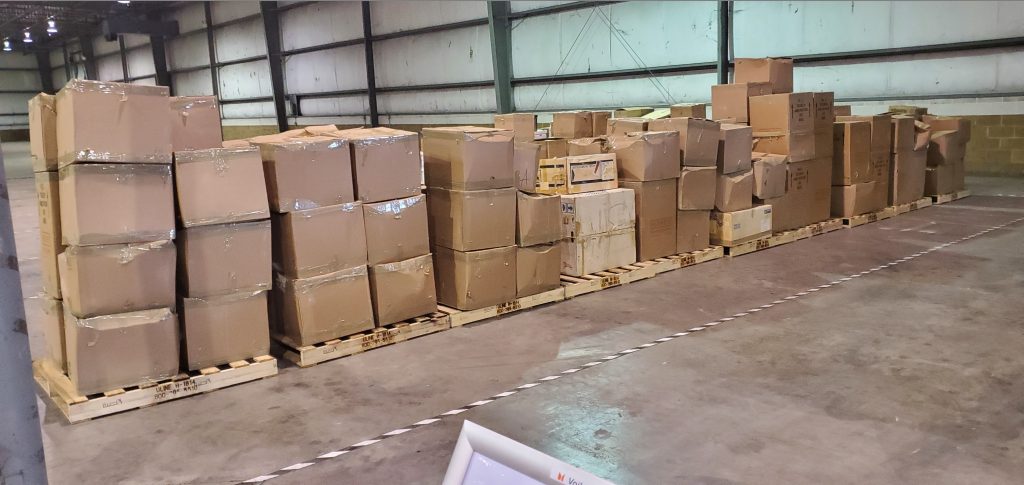
We spent two days inspecting all the boxes, and moving them into rough classifications: Books, Ephemera, Typewriters, Equipment, and so on. In doing so, we got a (very) initial assessment of the treasures within. Some notable examples:
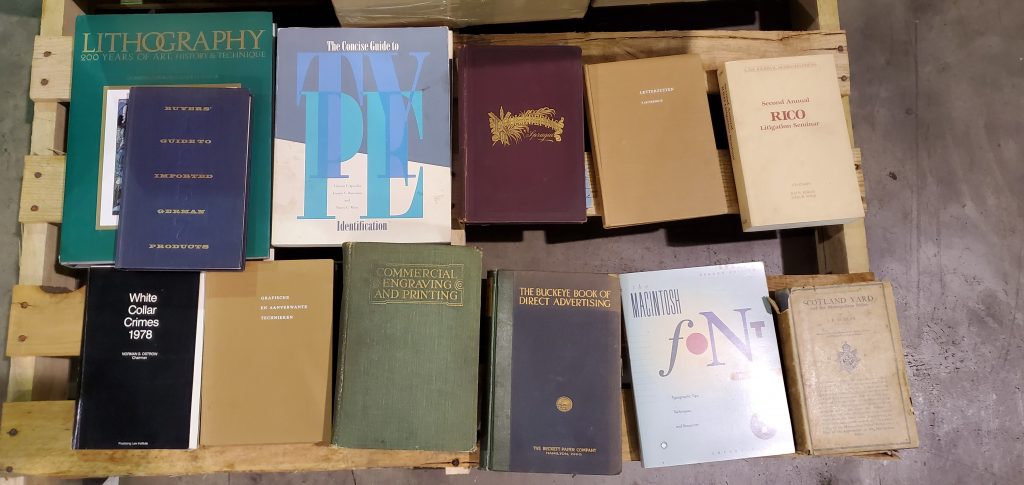


The subject matter of the hundreds of books in the collection range from criminal law (related to the investigative arm of the company) to graphology (study of handwriting) as well as overviews of law enforcement, detective work, and extensive guides of typewriter history. Some of these books are very old; an 1892 treatise on the ins and outs of bookkeeping was particularly beautiful.

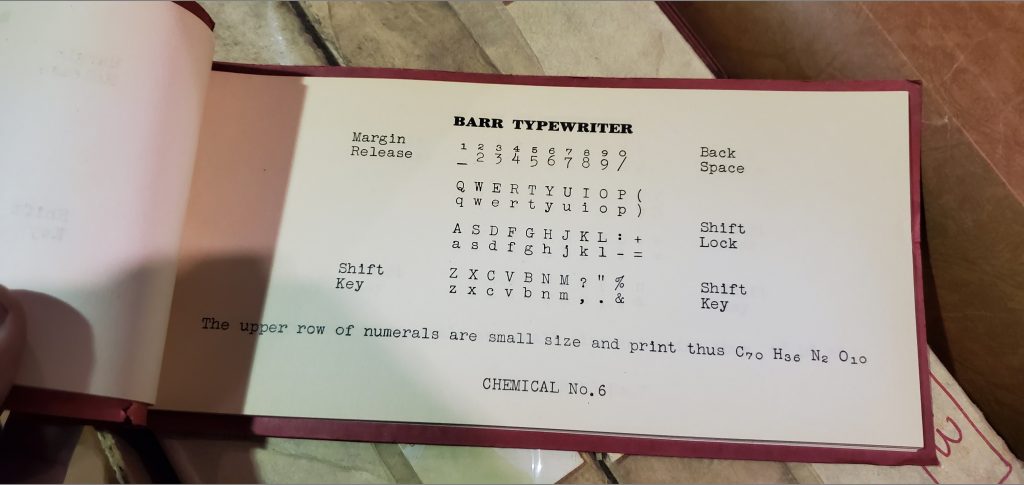
Hundreds of samples, both printed and hand-made, of typewriter output, separated by years, brands, and models. This may be one of the most important pieces of the collection, and one that will be digitized as soon as possible; they represent hard knowledge and evidence of what typewriters were capable of or what brands had which abilities at what time. These cards were used by the Tytells in court cases; research into what typewriters were capable of what featured in the Killian Documents Controversy.

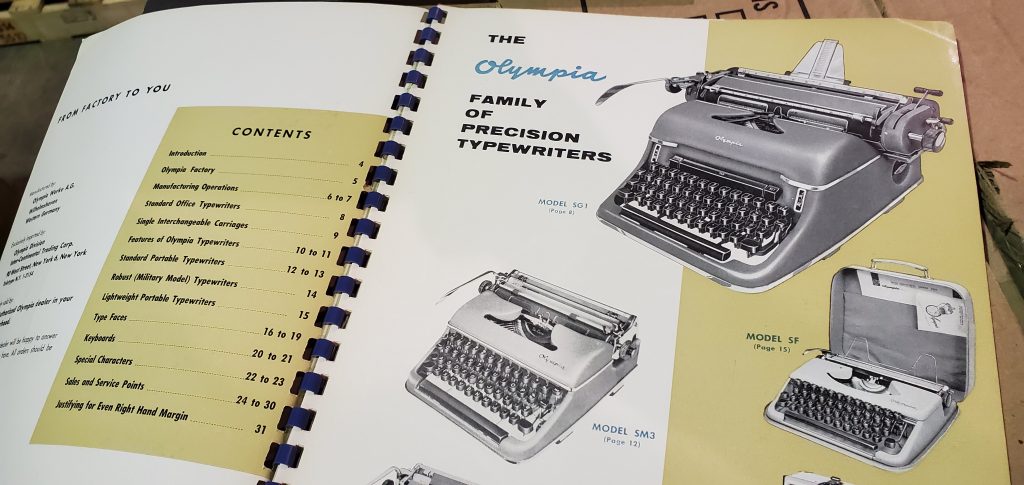

Brochures, stand-ups and manuals related to typewriter and print. There are thousands of pages of documents in this collection related to the sale, operation and overview of typewriters. They are incredibly well preserved and very beautiful, and digitizing them will be a chore but also a joy with what comes out the other end.

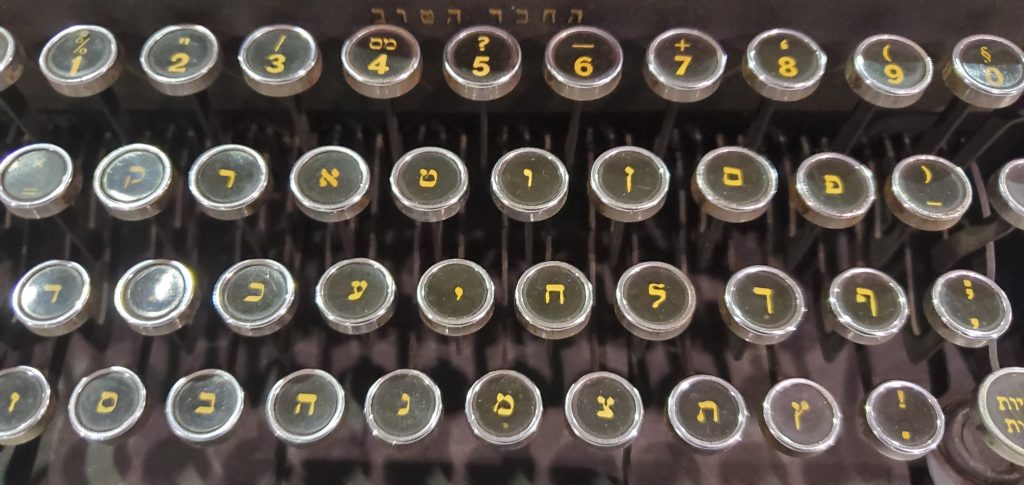
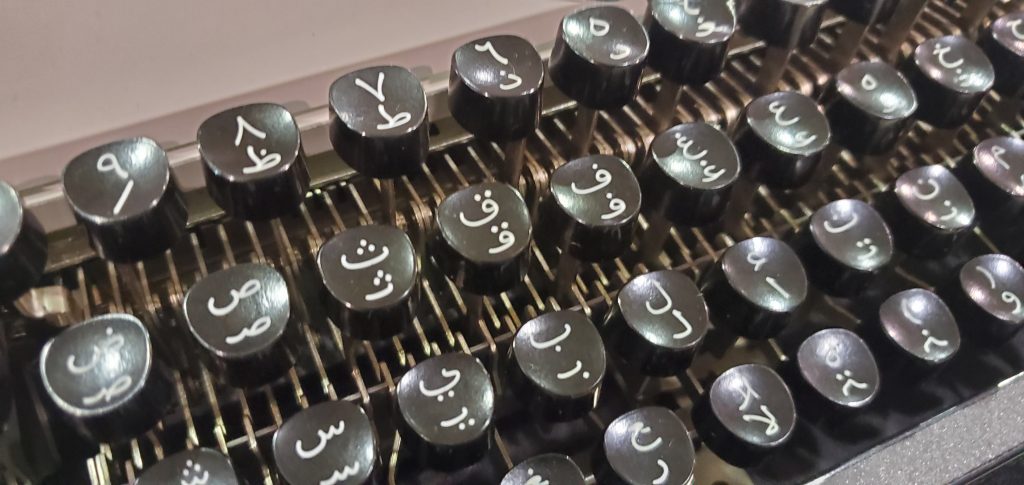
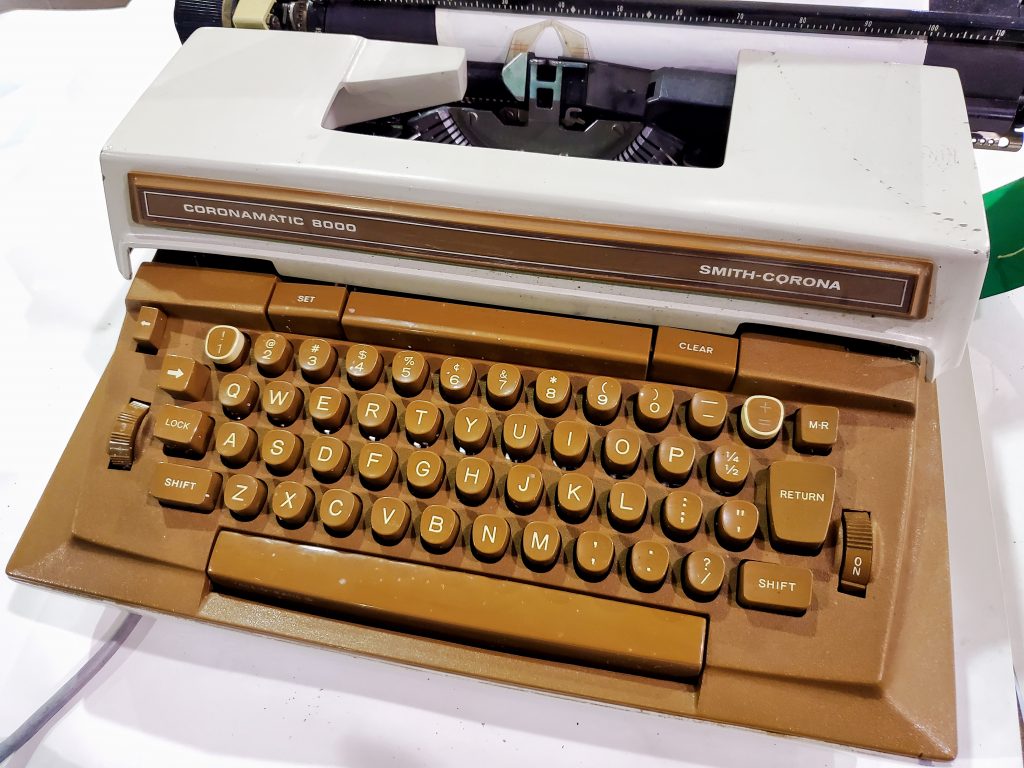
Typewriters of every description; standard commercial models now long out of production and sale, as well as custom or extremely-low production examples, such as machines that type in Arabic or Hebrew. They will not be stored away never to be seen again; they will, however it is worked out, play a part in telling the story of typewriters and the family that lovingly worked on them for so long.

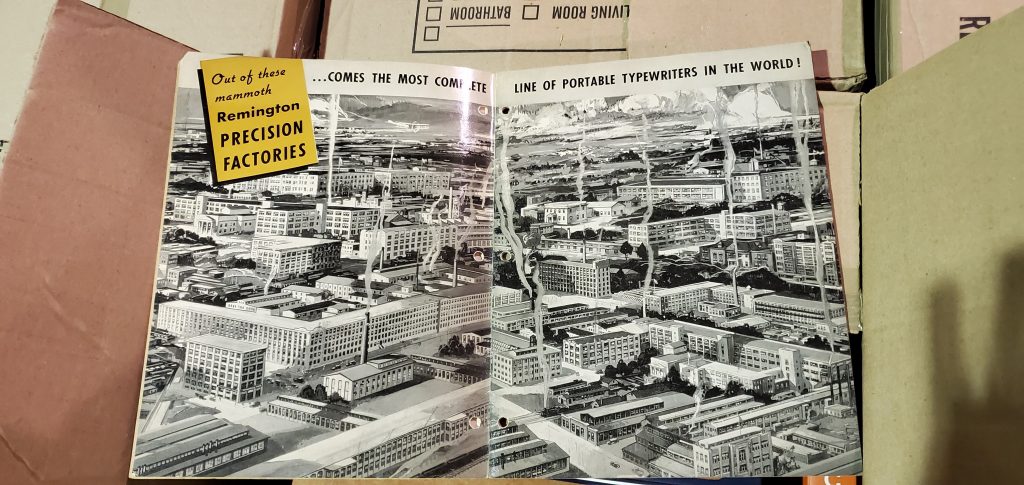
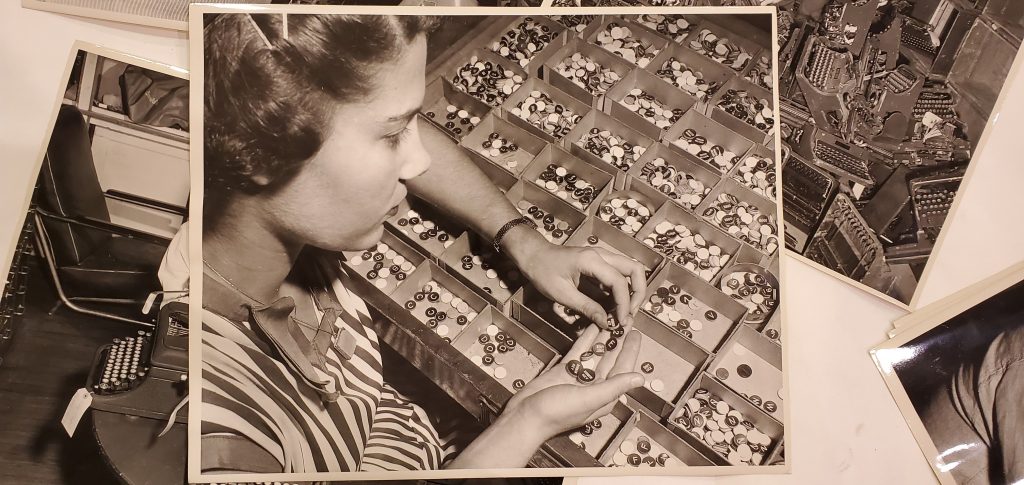

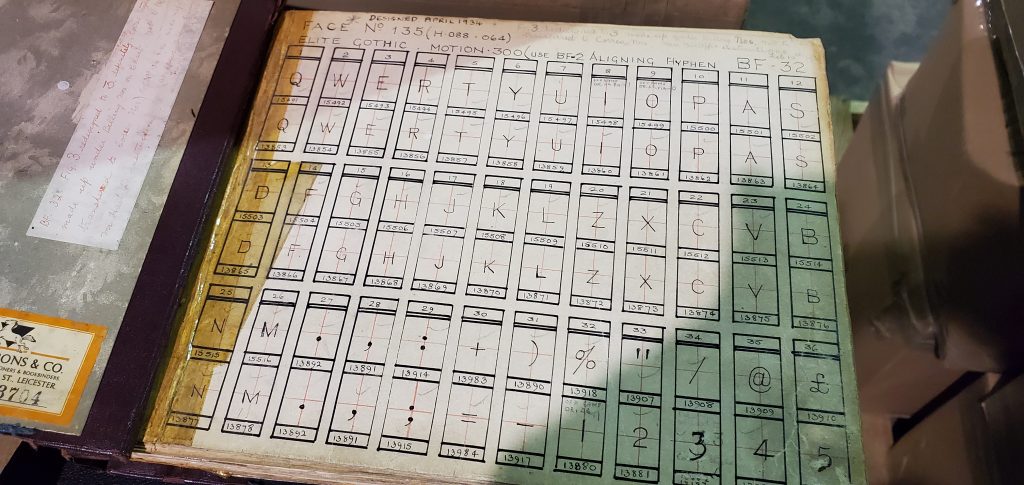
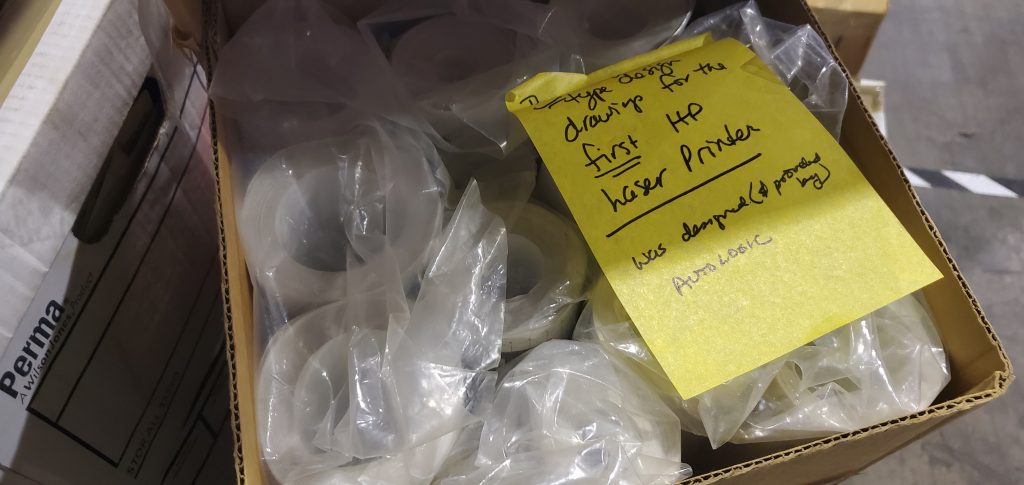
If the variation and size of this collection seems endless – that’s a natural reaction. In fact, it is exciting on many different levels, with all sorts of disciplines combining into pallets of boxes now sitting quietly in storage. That’s the magic of a acquisition like this; the character and nature of a family of experts breathes out from every container.
It’ll be an extensive project to process and understand everything here, and it’ll be an honor to play a part in its preservation. We mourn those who came before us and thank them, as we can, for the opportunity to keep telling their stories.
Further Reading of Tytell Typewriter Company and Peter, Martin and Pearl Tytell
https://www.theatlantic.com/magazine/archive/1997/11/typewriter-man/376988/
https://en.wikipedia.org/wiki/Martin_Tytell
https://www.irishtimes.com/business/no-carriage-return-for-the-jurassic-typewriter-1.304472
https://www.nytimes.com/1994/06/12/nyregion/new-yorkers-co-mr-typewriter-new-york.html
https://www.nytimes.com/2008/09/12/nyregion/12tytell.html
https://www.nytimes.com/2001/02/19/nyregion/one-fewer-place-to-unstick-a-inicky-f-key.html
http://algerhiss.com/history/the-hiss-case-the-1940s/the-typewriter/forgery-by-typewriter/forging-a-typewriter/
http://afflictor.com/2012/06/11/he-could-make-an-american-typewriter-speak-145-different-tongues-from-russian-to-homeric-greek/
https://www.nytimes.com/2017/11/24/obituaries/mary-adelman-89-fixer-of-broken-typewriters-is-dead.html
https://oztypewriter.blogspot.com/2020/08/a-tribute-to-peter-tytell-son-of.html
https://www.nytimes.com/2020/08/18/us/peter-v-tytell-dead.html
The post An Archive of a Different Type appeared first on Internet Archive Blogs.







































































































![Reference manager - [Onderhoud aantekeningen]](http://labyrinth.rienkjonker.nl/sites/default/files/styles/medium/public/Reference%20manager%20v3%20-%20%5BOnderhoud%20aantekeningen%5D%2014-2-2010%20102617_0.jpg?itok=OJkkWhxY)
![Reference manager - [Onderhoud aantekeningen]](http://labyrinth.rienkjonker.nl/sites/default/files/styles/medium/public/Reference%20manager%20v3%20-%20%5BOnderhoud%20aantekeningen%5D%2014-2-2010%20102628.jpg?itok=CUvhRRr7)
![Reference manager - [Onderhoud bronnen] - Opnemen en onderhouden](http://labyrinth.rienkjonker.nl/sites/default/files/styles/medium/public/Reference%20manager%20v3%20-%20%5BOnderhoud%20bronnen%5D%2014-2-2010%20102418.jpg?itok=d7rnOhhK)
![Reference manager - [Onderhoud bronnen]](http://labyrinth.rienkjonker.nl/sites/default/files/styles/medium/public/Reference%20manager%20v3%20-%20%5BOnderhoud%20bronnen%5D%2014-2-2010%20102433.jpg?itok=CgS8R6cS)
![Reference manager - [Onderhoud bronnen]](http://labyrinth.rienkjonker.nl/sites/default/files/styles/medium/public/Reference%20manager%20v3%20-%20%5BOnderhoud%20bronnen%5D%2014-2-2010%20102445_0.jpg?itok=4oJ07yFZ)
![Reference manager - [Onderhoud bronnen]](http://labyrinth.rienkjonker.nl/sites/default/files/styles/medium/public/Reference%20manager%20v3%20-%20%5BOnderhoud%20bronnen%5D%2014-2-2010%20102500.jpg?itok=ExHJRjAO)
![Reference manager - [Onderhoud bronnen]](http://labyrinth.rienkjonker.nl/sites/default/files/styles/medium/public/Reference%20manager%20v3%20-%20%5BOnderhoud%20bronnen%5D%2014-2-2010%20102524.jpg?itok=IeHaYl_M)
![Reference manager - [Onderhoud bronnen]](http://labyrinth.rienkjonker.nl/sites/default/files/styles/medium/public/Reference%20manager%20v3%20-%20%5BOnderhoud%20bronnen%5D%2014-2-2010%20102534.jpg?itok=cdKP4u3I)
![Reference manager - [Onderhoud thema's en rubrieken]](http://labyrinth.rienkjonker.nl/sites/default/files/styles/medium/public/Reference%20manager%20v3%20-%20%5BOnderhoud%20themas%20en%20rubrieken%5D%2020-9-2009%20185626.jpg?itok=zM5uJ2Sf)













![Reference manager - [Raadplegen aantekeningen]](http://labyrinth.rienkjonker.nl/sites/default/files/styles/medium/public/Reference%20manager%20v3%20-%20%5BRaadplegen%20aantekeningen%5D%2020-9-2009%20185612.jpg?itok=RnX2qguF)
![Reference manager - [Relatie termen (thesaurus)]](http://labyrinth.rienkjonker.nl/sites/default/files/styles/medium/public/Reference%20manager%20v3%20-%20%5BRelatie%20termen%20%28thesaurus%29%5D%2014-2-2010%20102751.jpg?itok=SmxubGMD)
![Reference manager - [Thesaurus raadplegen]](http://labyrinth.rienkjonker.nl/sites/default/files/styles/medium/public/Reference%20manager%20v3%20-%20%5BThesaurus%20raadplegen%5D%2014-2-2010%20102732.jpg?itok=FWvNcckL)
![Reference manager - [Zoek thema en rubrieken]](http://labyrinth.rienkjonker.nl/sites/default/files/styles/medium/public/Reference%20manager%20v3%20-%20%5BZoek%20thema%20en%20rubrieken%5D%2020-9-2009%20185546.jpg?itok=6sUOZbvL)
![Reference manager - [Onderhoud rubrieken]](http://labyrinth.rienkjonker.nl/sites/default/files/styles/medium/public/Reference%20manager%20v3%2020-9-2009%20185634.jpg?itok=oZ8RFfVI)

![Reference manager - [Onderhoud aantekeningen]](http://labyrinth.rienkjonker.nl/sites/default/files/styles/medium/public/Reference%20manager%20v3%20-%20%5BOnderhoud%20aantekeningen%5D%2014-2-2010%20102603.jpg?itok=XMMJmuWz)


































































